Samarkand
Samarkand is a coolest historical city in Uzbekistan.
It so happened that I visited Iran long before I went to the Central Asian countries. I liked Iran, but even back then wise people advised me to travel to Uzbekistan, assuring me that this country is ten times more Persian than Persia itself.
Uzbekistan indeed turned out to be cooler than Iran. For example, the enormous central square of Isfahan, one of the best cities in Iran, seems like an enlarged version of Samarkand’s Registan Square, and there is nothing more in the city. But in Samarkand, there are literally scattered incredibly amazing places that you would tire of listing.
Tamerlane
What worth the mausoleum of Tamerlane alone.
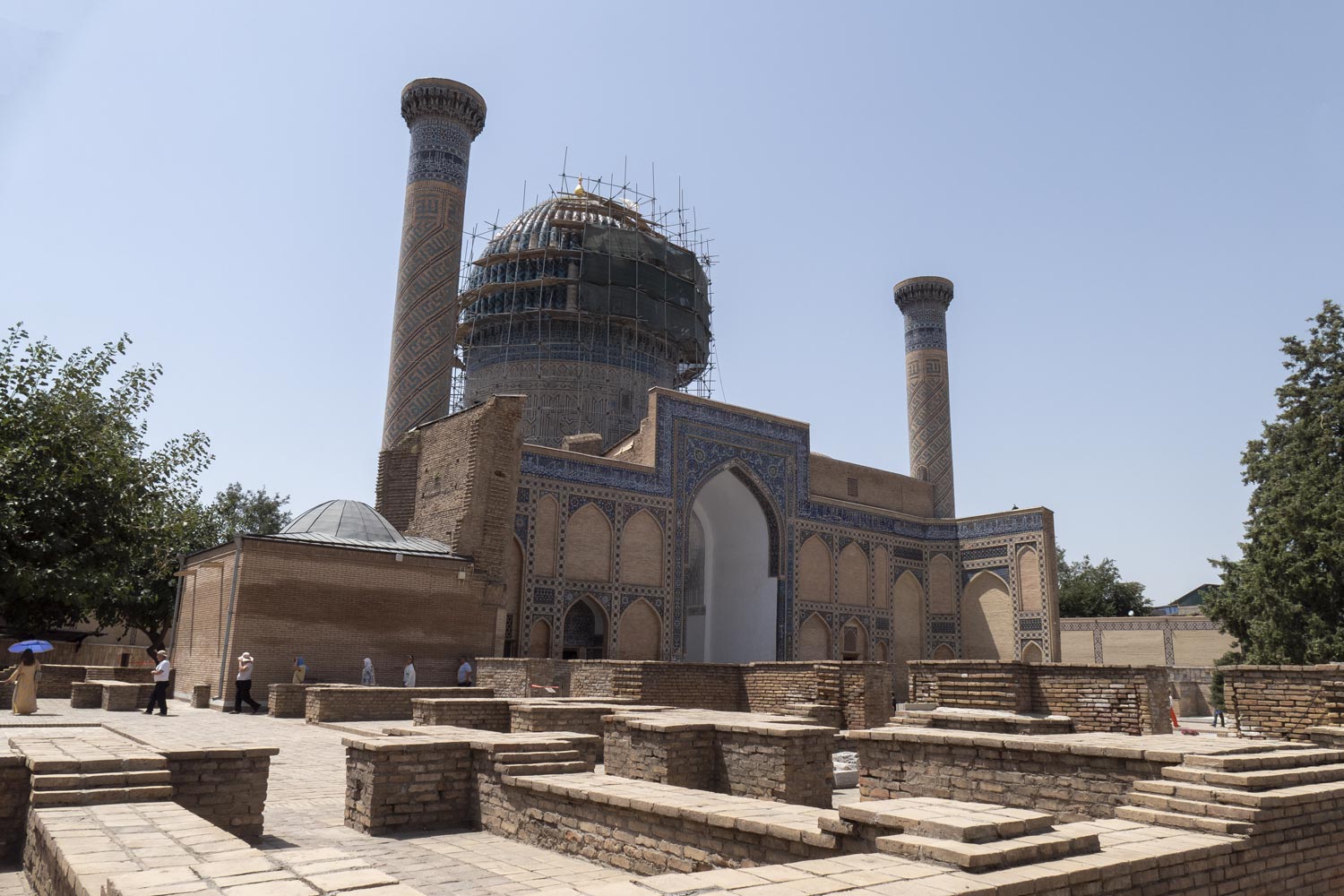
Like all the monuments of Samarkand, the mausoleum is seamlessly integrated into the city as if it were just another building, like a school or a shop. There’s an ordinary road nearby, residential houses, shops, and taxis passing by.
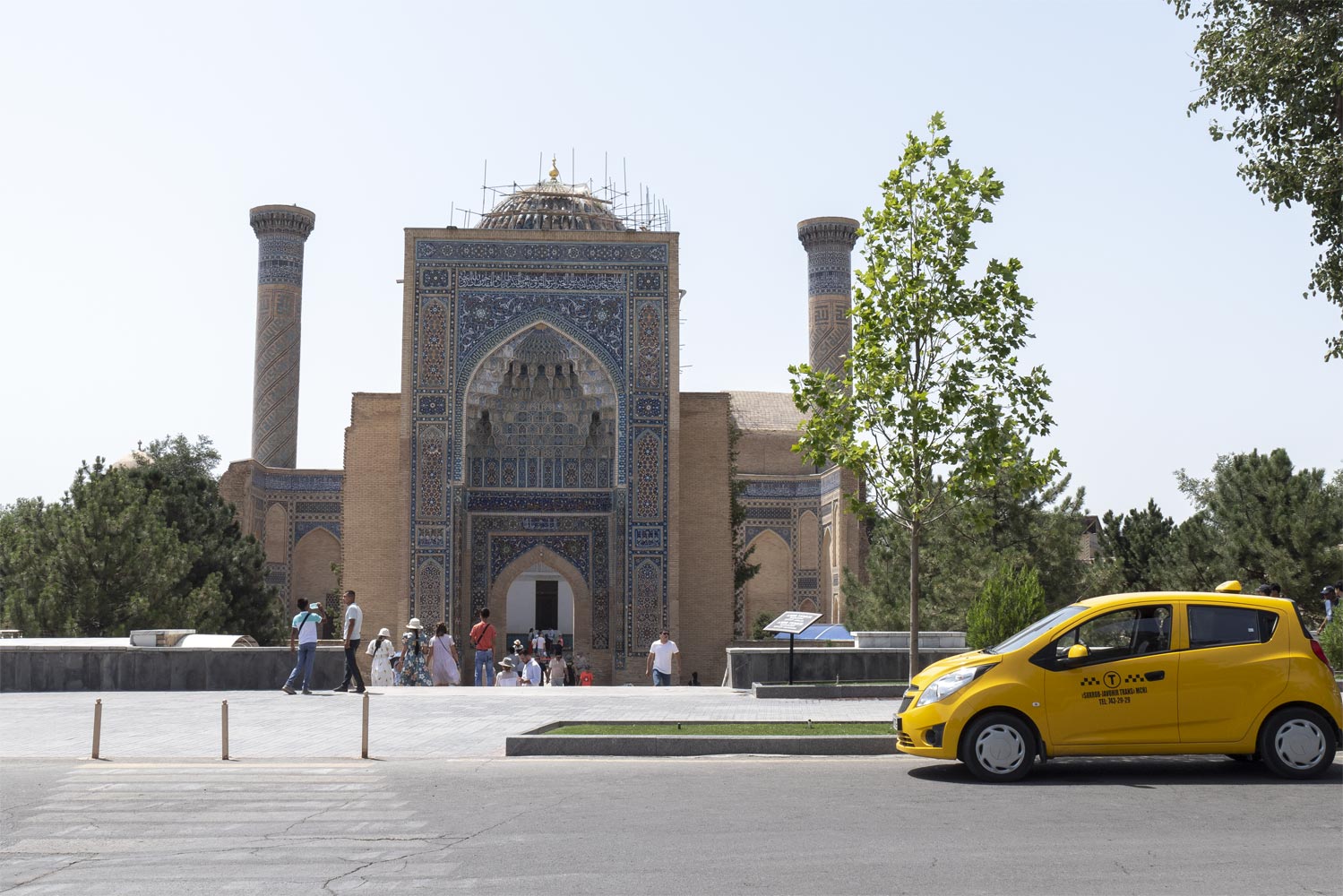
The architecture does not differ from Iranian architecture.
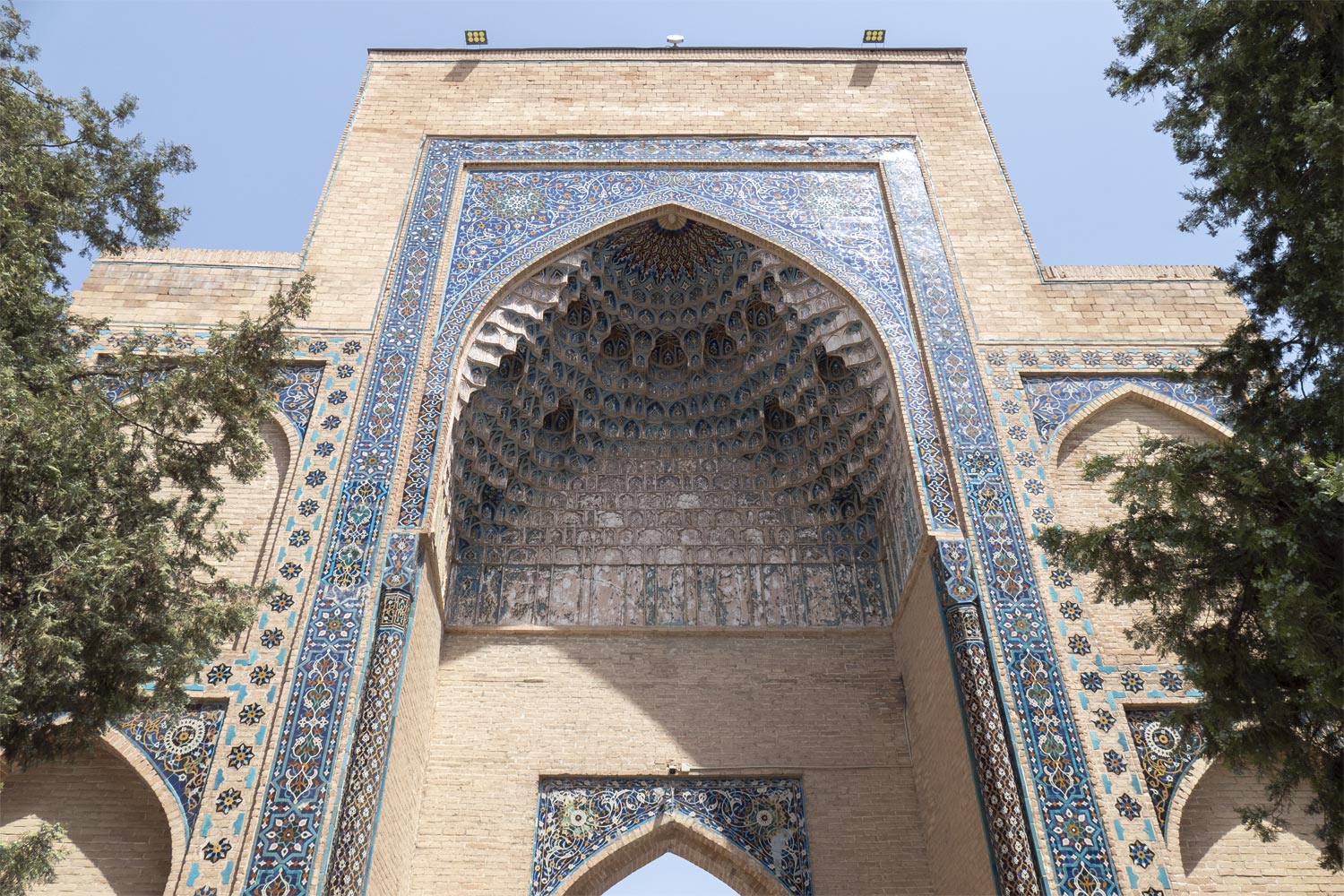
The same bricks, the same decorative tiles. Nothing surprising, considering that Samarkand, roughly speaking, was the capital of Persia. To be precise, in the 9th century, Samarkand was the capital of the Samanid Empire, and in the 14th century, it was the empire of Tamerlane. Historians do not refer to them as “Persia,” but we are not in a lecture hall.
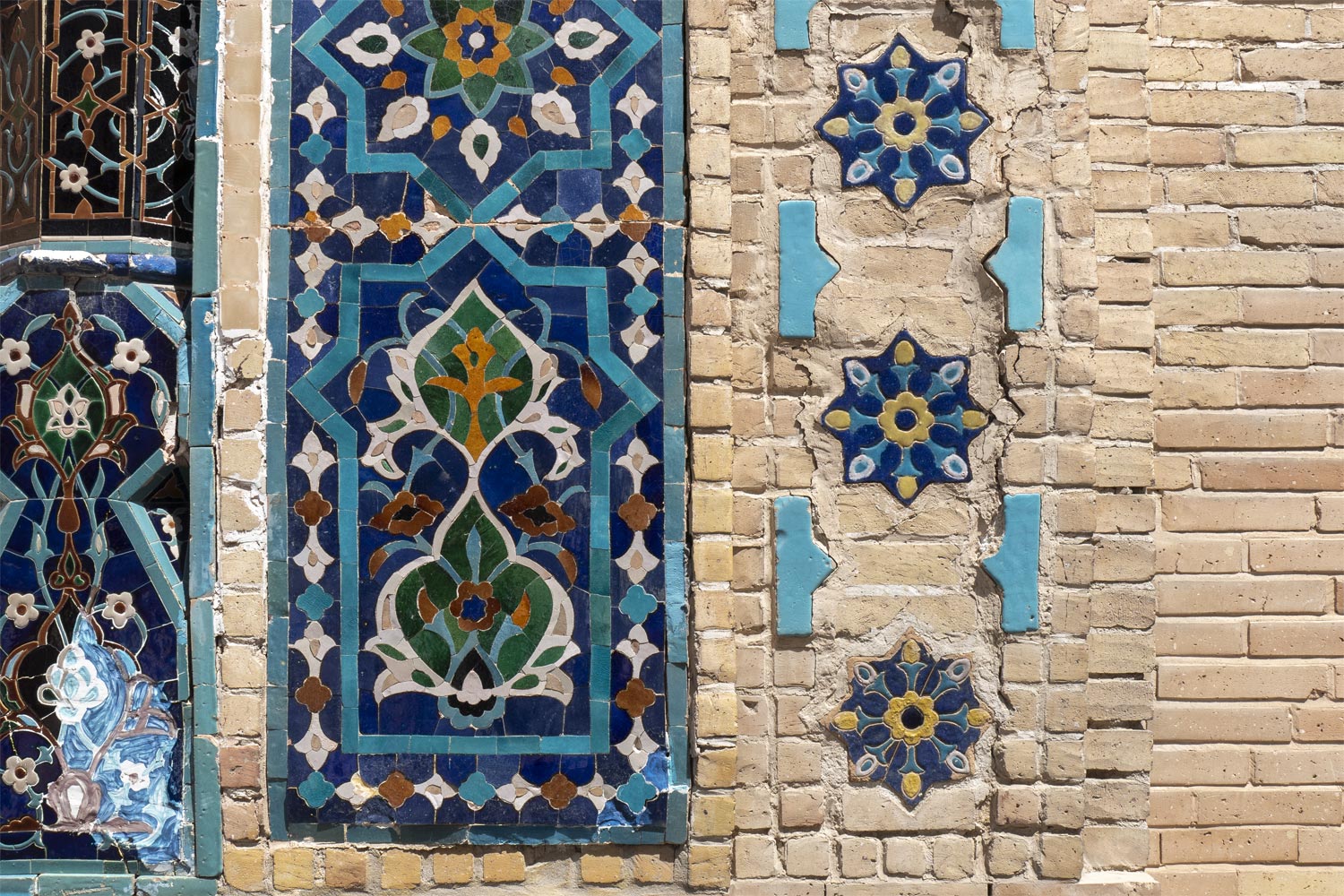
Indeed, during that time, the mausoleum of Tamerlane was constructed. It was in the year 1404. Tamerlane himself and some members of his family are buried in the mausoleum.
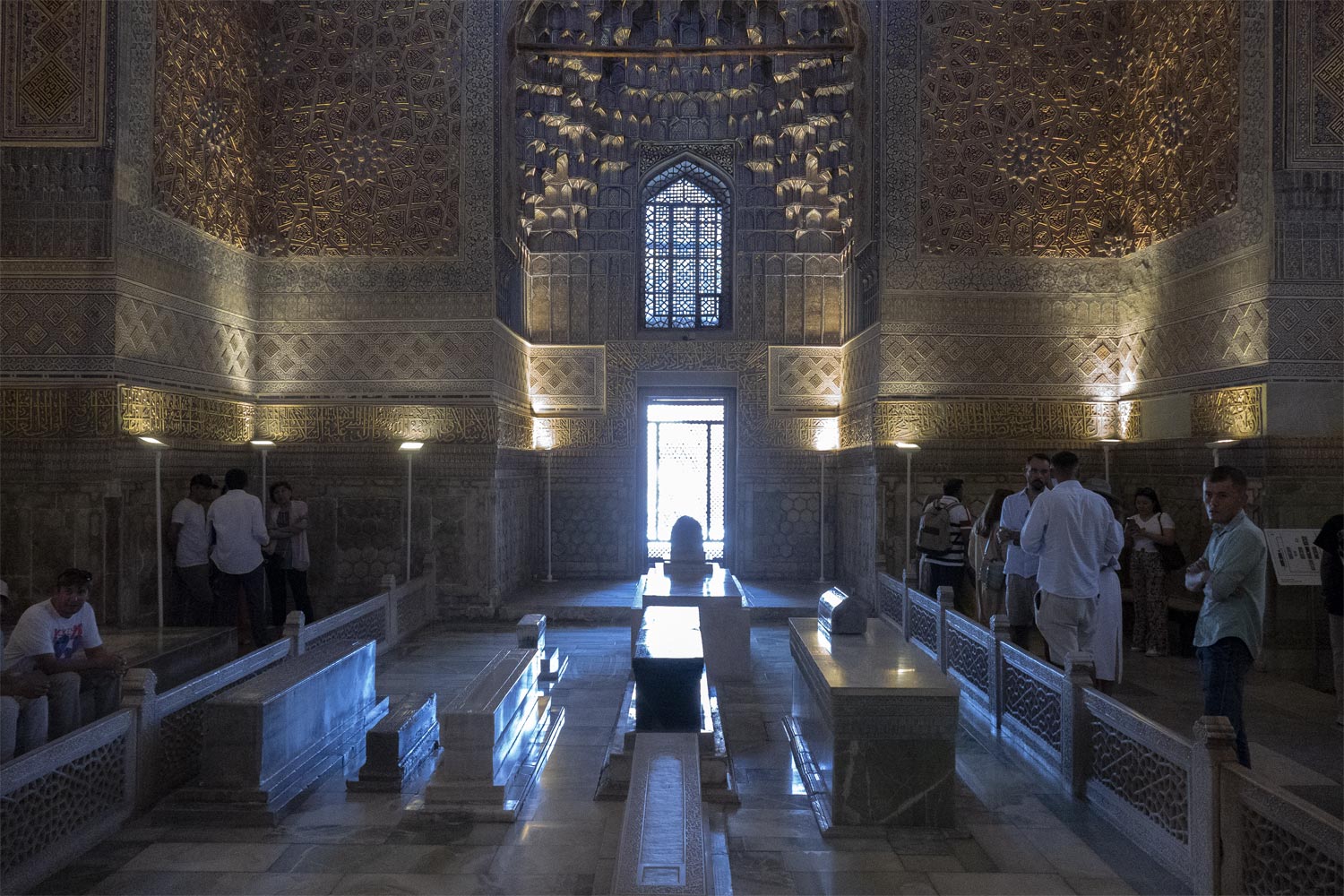
Inside, the mausoleum is decorated in a way that makes even the royal palaces in Tehran feel uneasy.
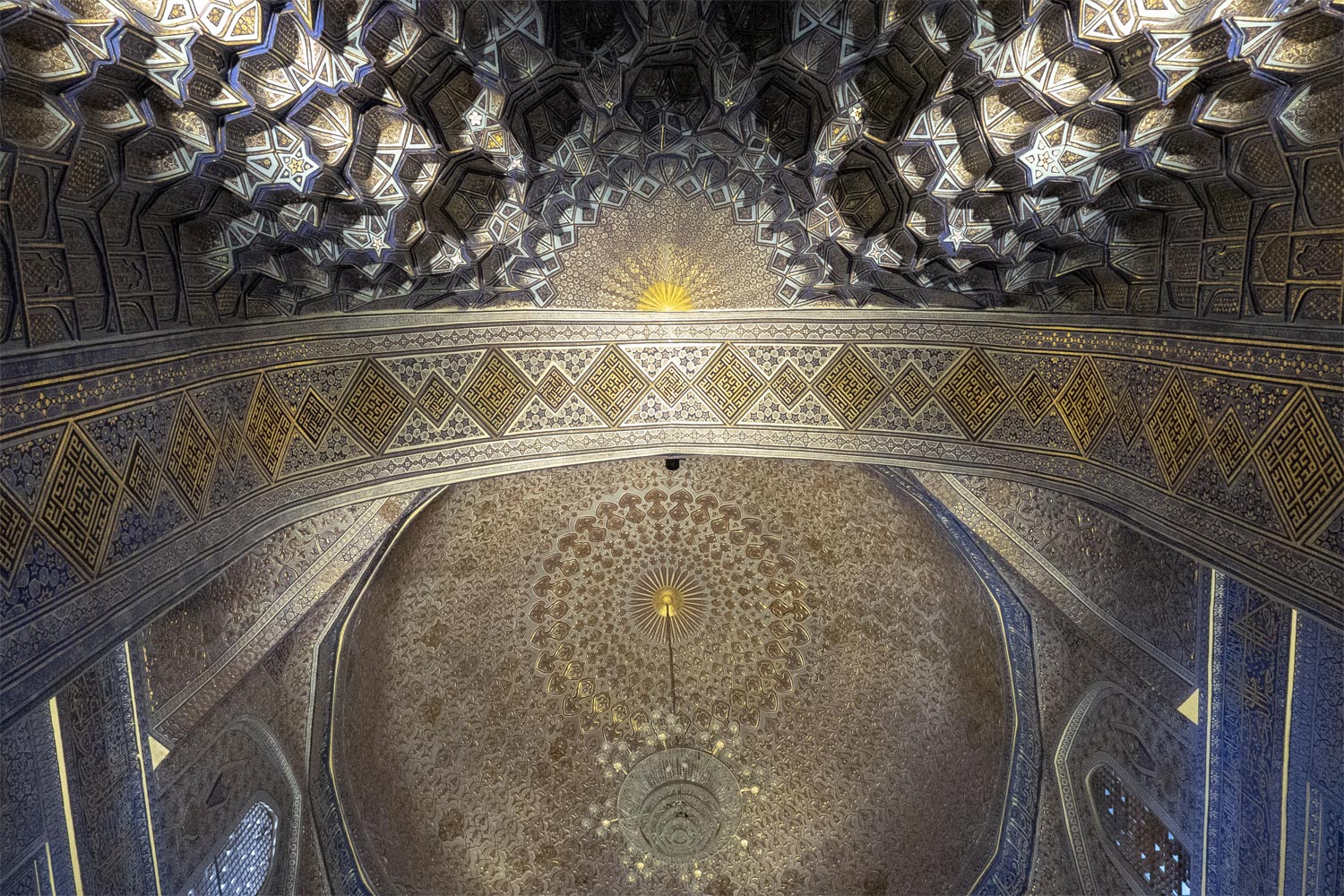
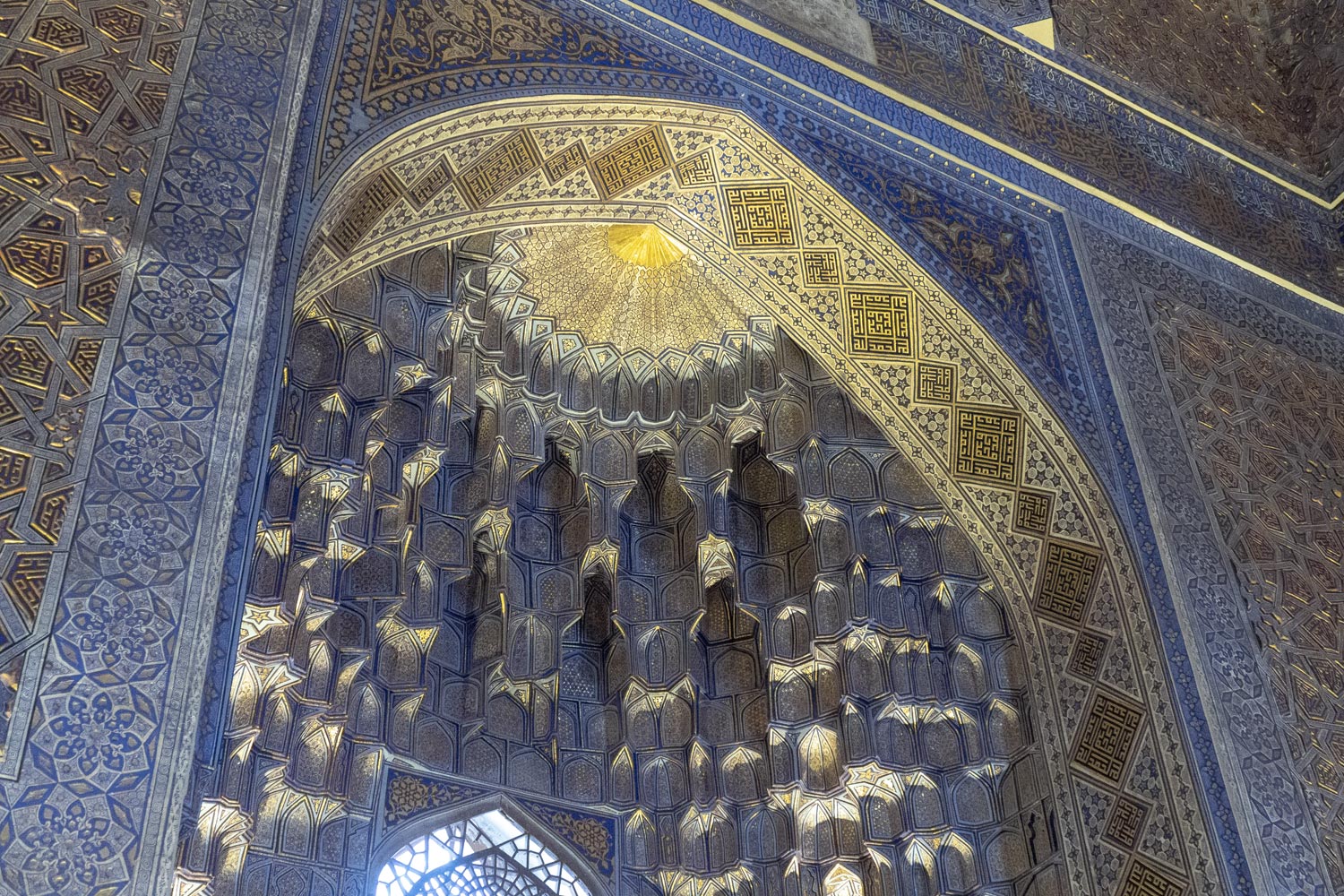
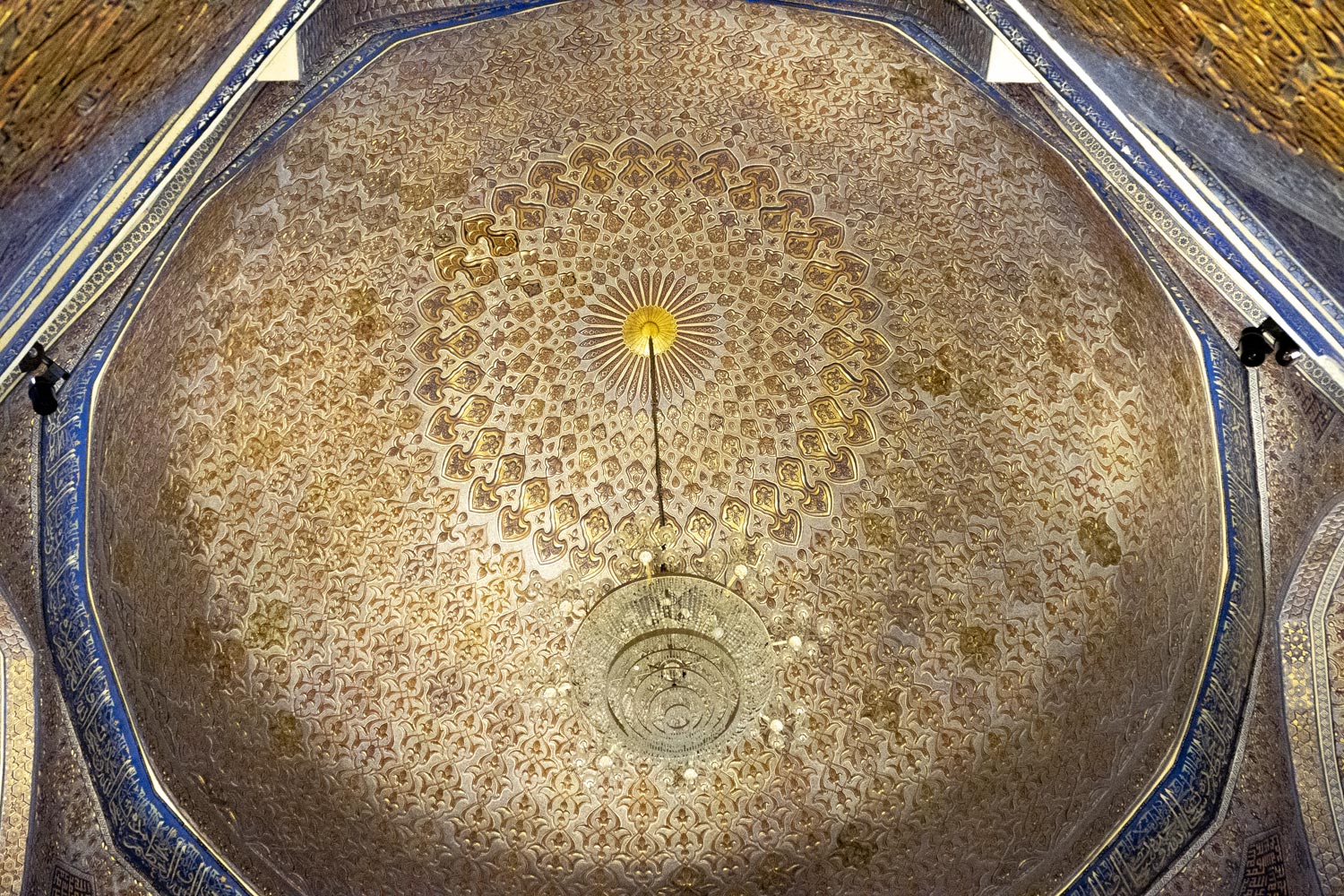
By the way, in Uzbekistan, it is customary to refer to Tamerlane as Timur. This is his real name. The Persians called him Tamerlane due to his cruelty, and it translates to “Timur the Lame.”
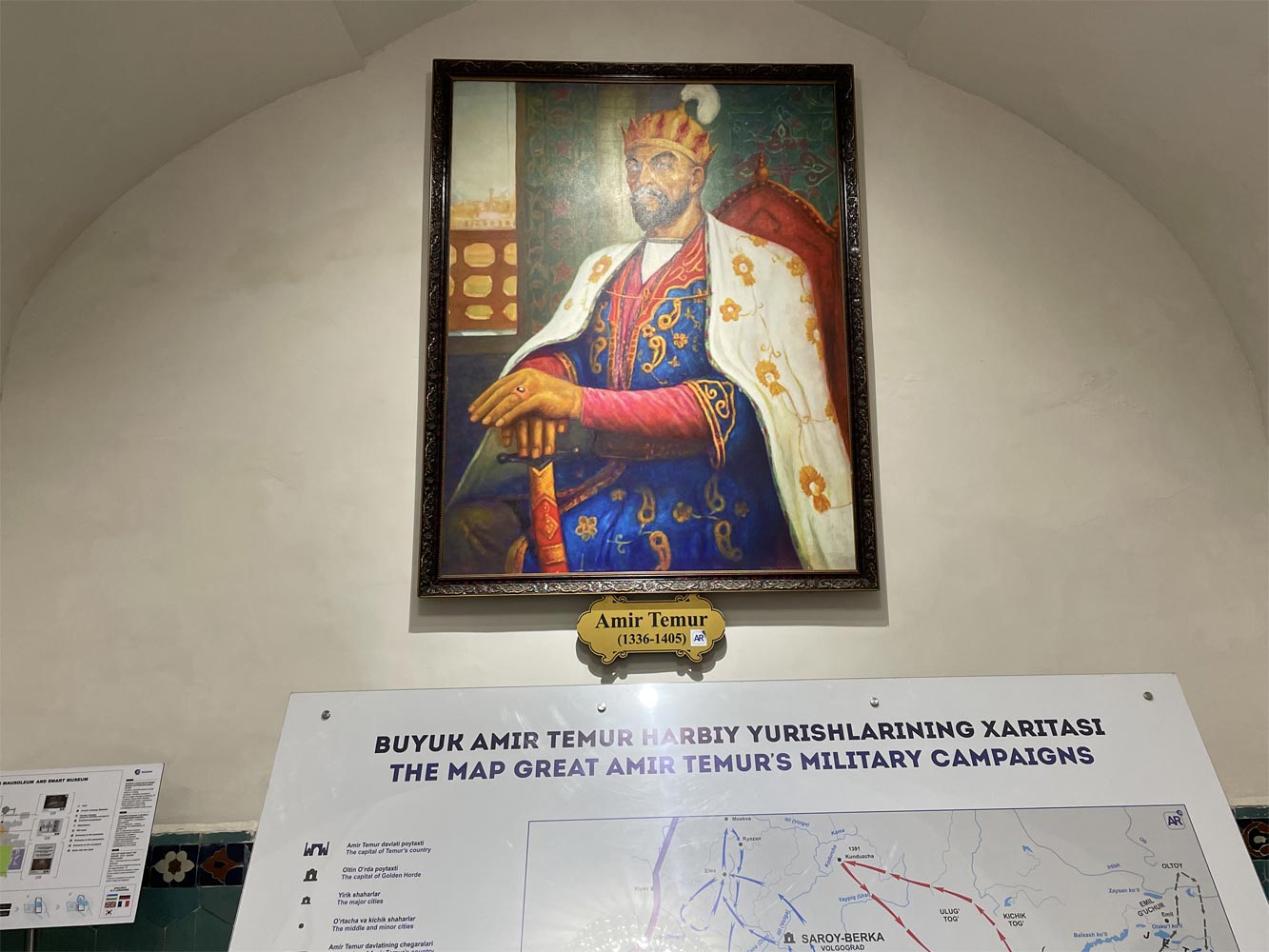
Registan
Another iconic place in Samarkand is Registan Square.
This is another Persian word that comes from the words “reg” and “stan,” literally meaning “sandy place.” “Registan” is a general term for squares in Central Asian countries, similar to “meydan” in Turkic languages.
Registan is a small square surrounded by madrasas, or Muslim schools, on three sides.
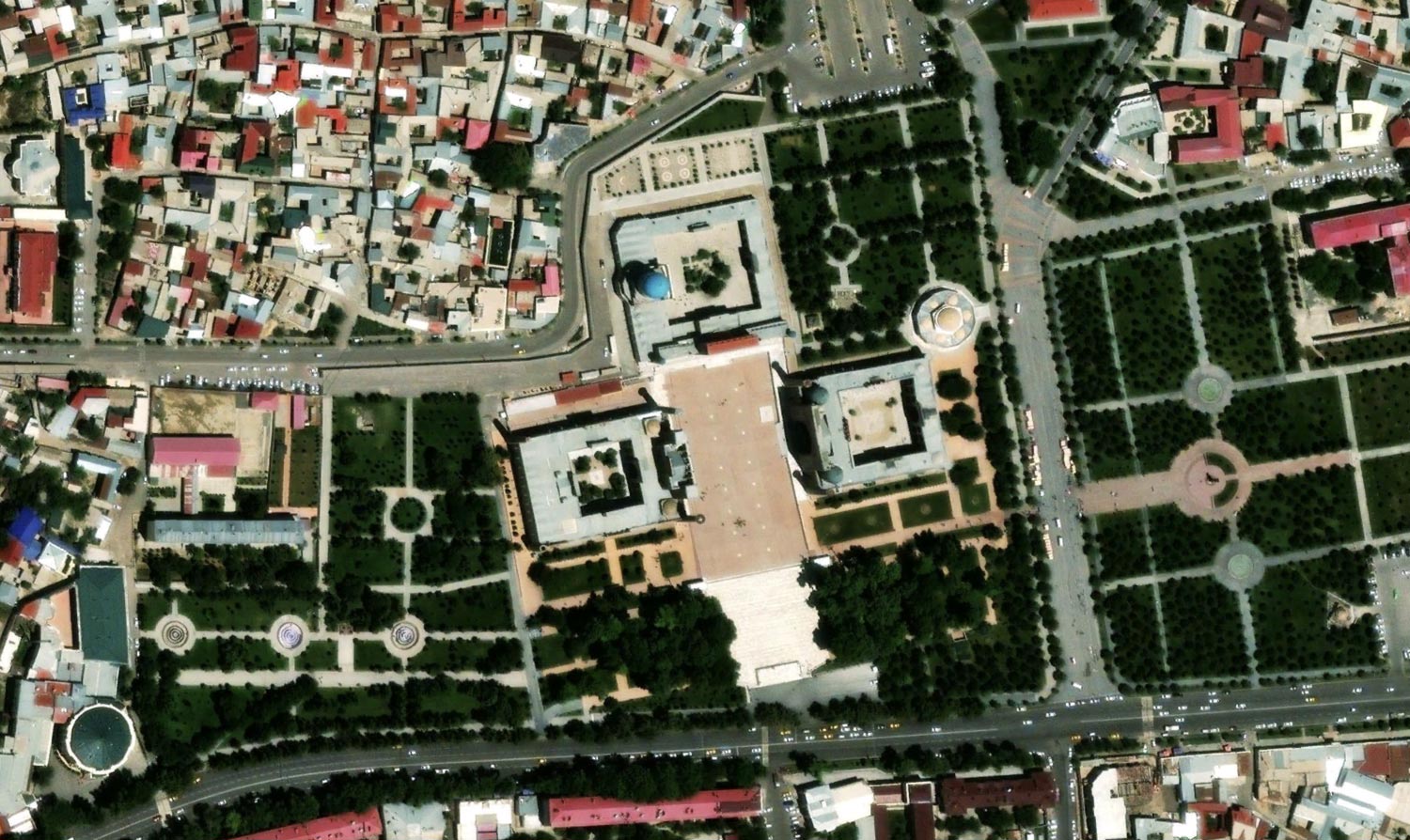
The impression of Registan is only marred by the hideous fence that the Uzbek authorities have stretched around the square. Incomprehensibly, the government of Samarkand came up with the idea of making an entrance fee for accessing the square!
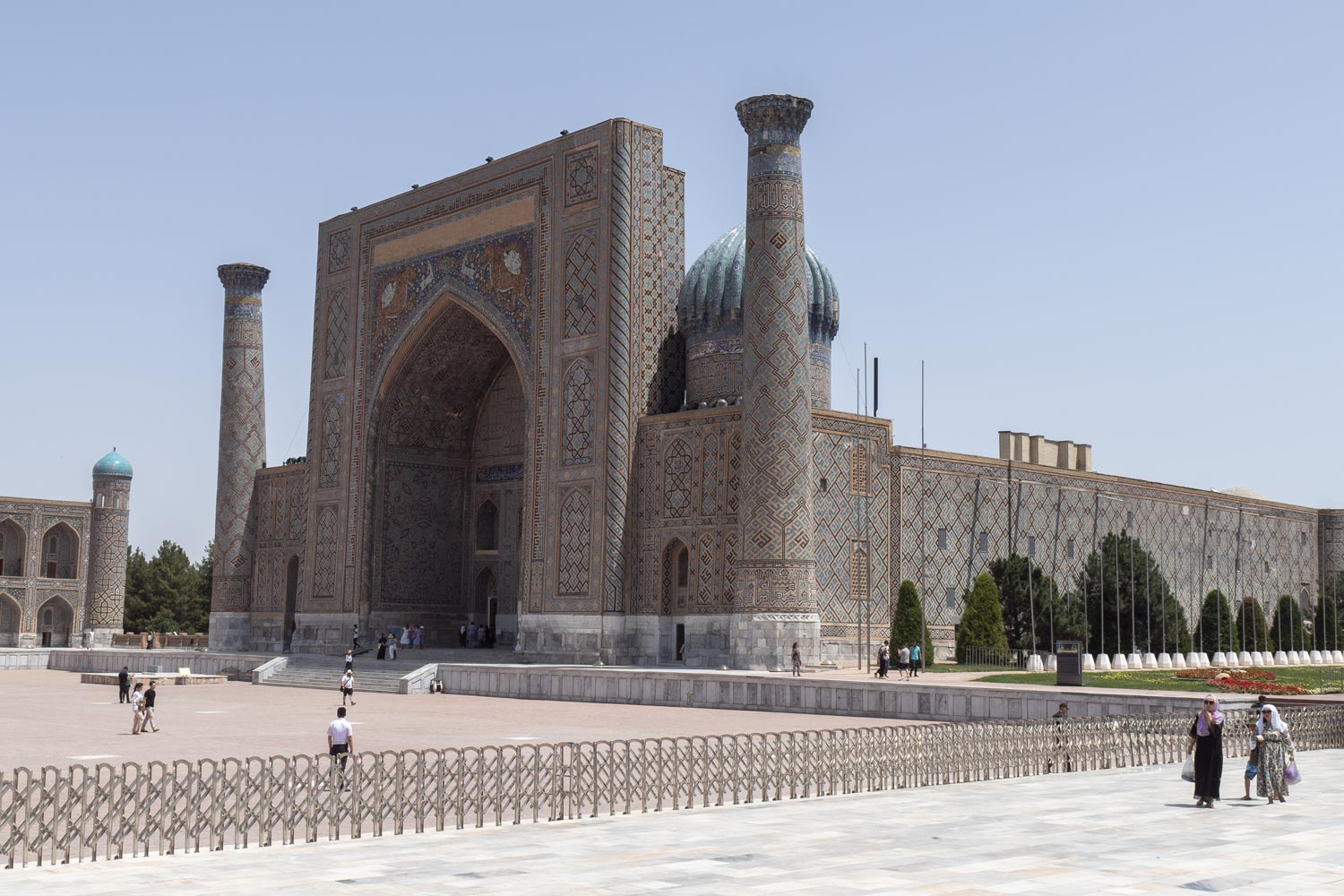
The schemes of greedy Uzbek officials did not spoil the impression. Registan is like an intravenous injection of Persian architecture.
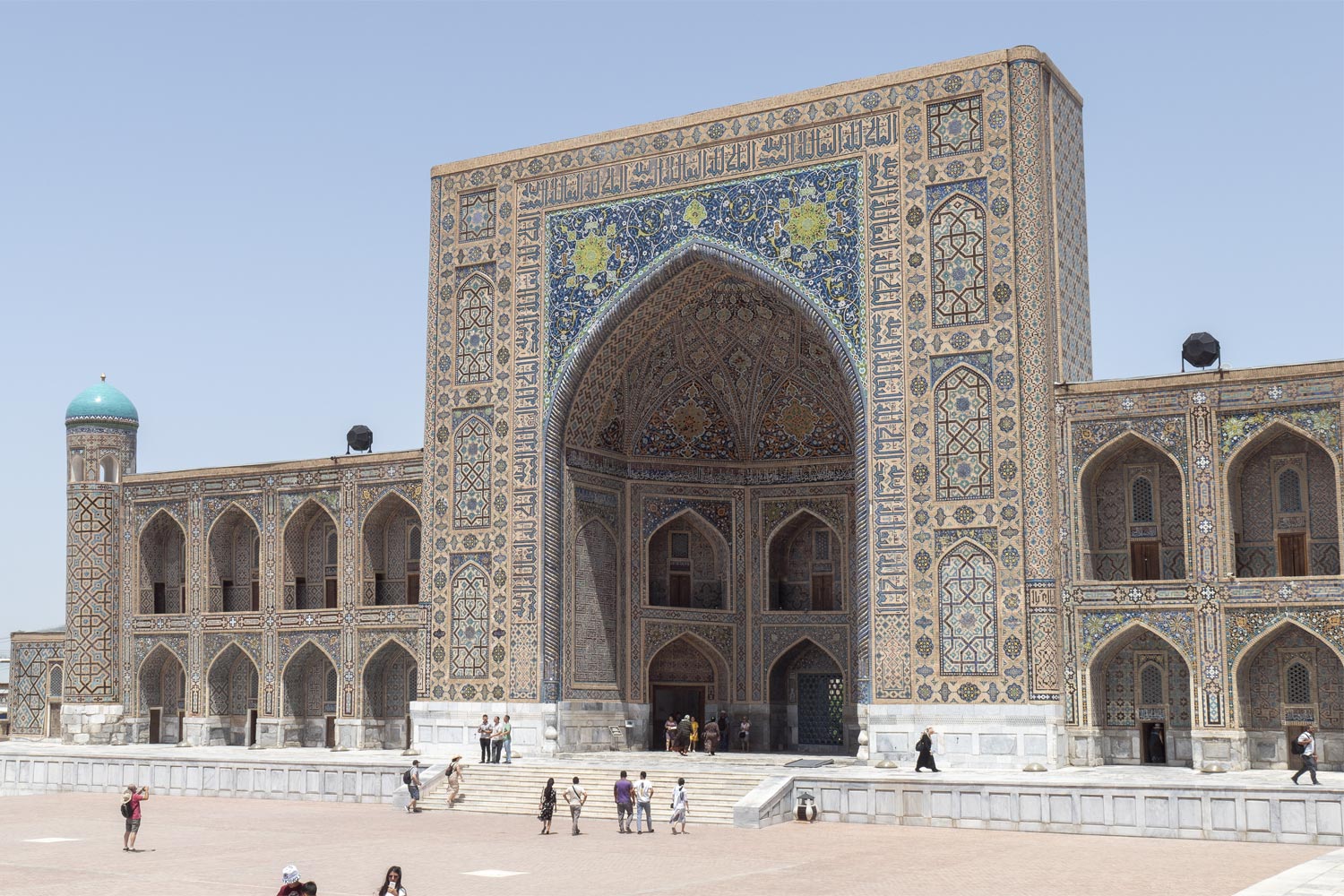
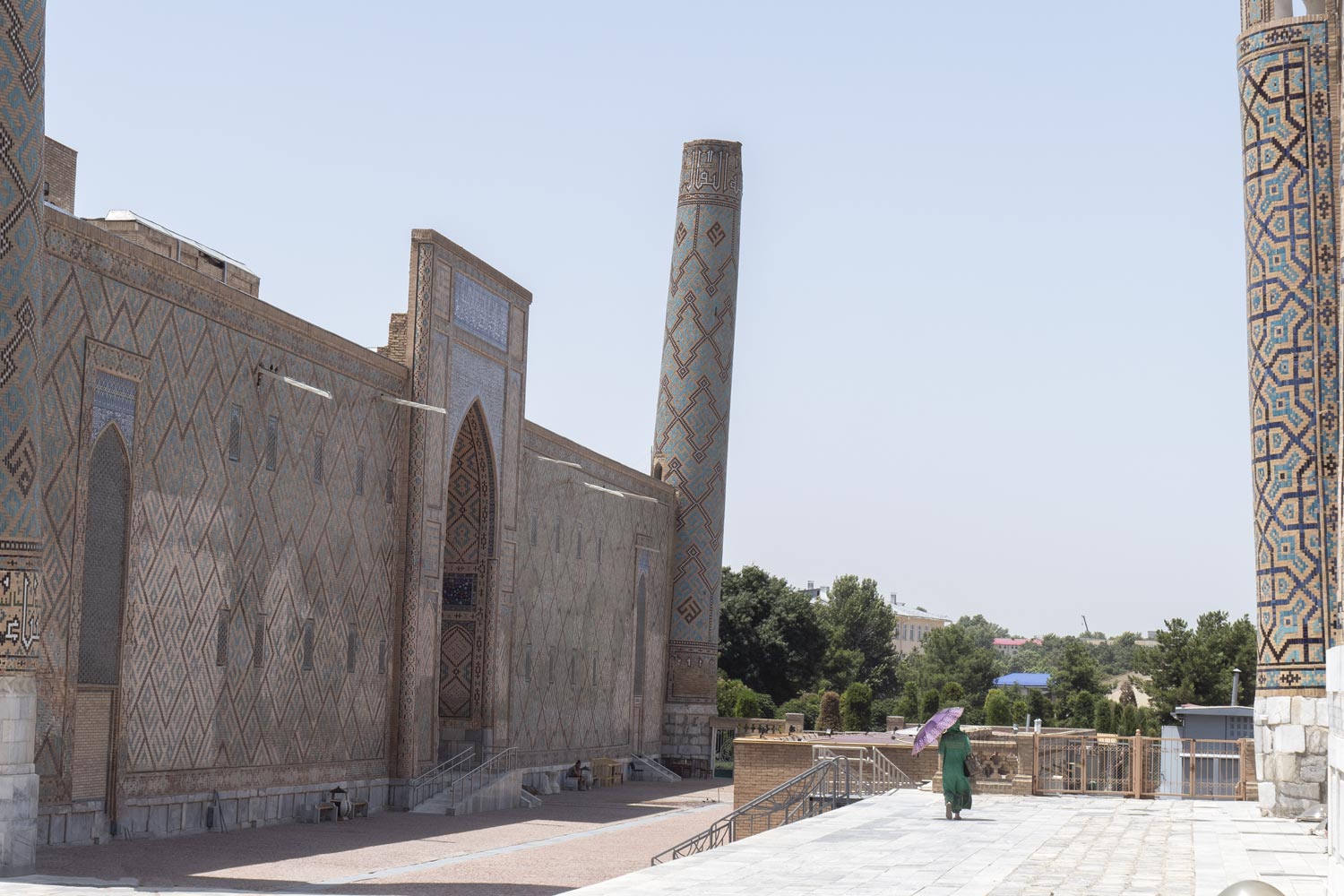
Such beauty made Kufic patterns naturally appear on my body, and my mouth spontaneously began reciting the Islamic prayers.
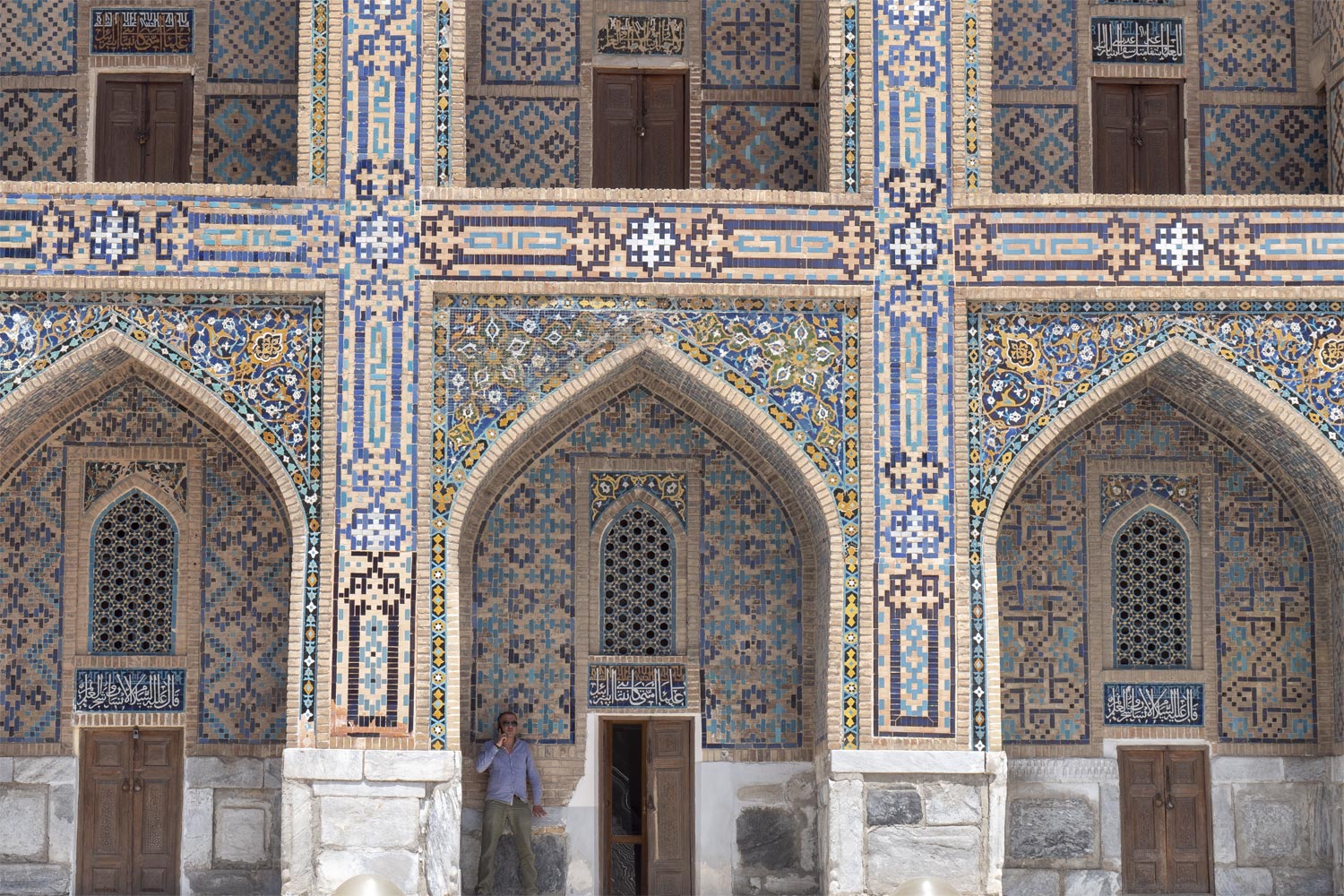
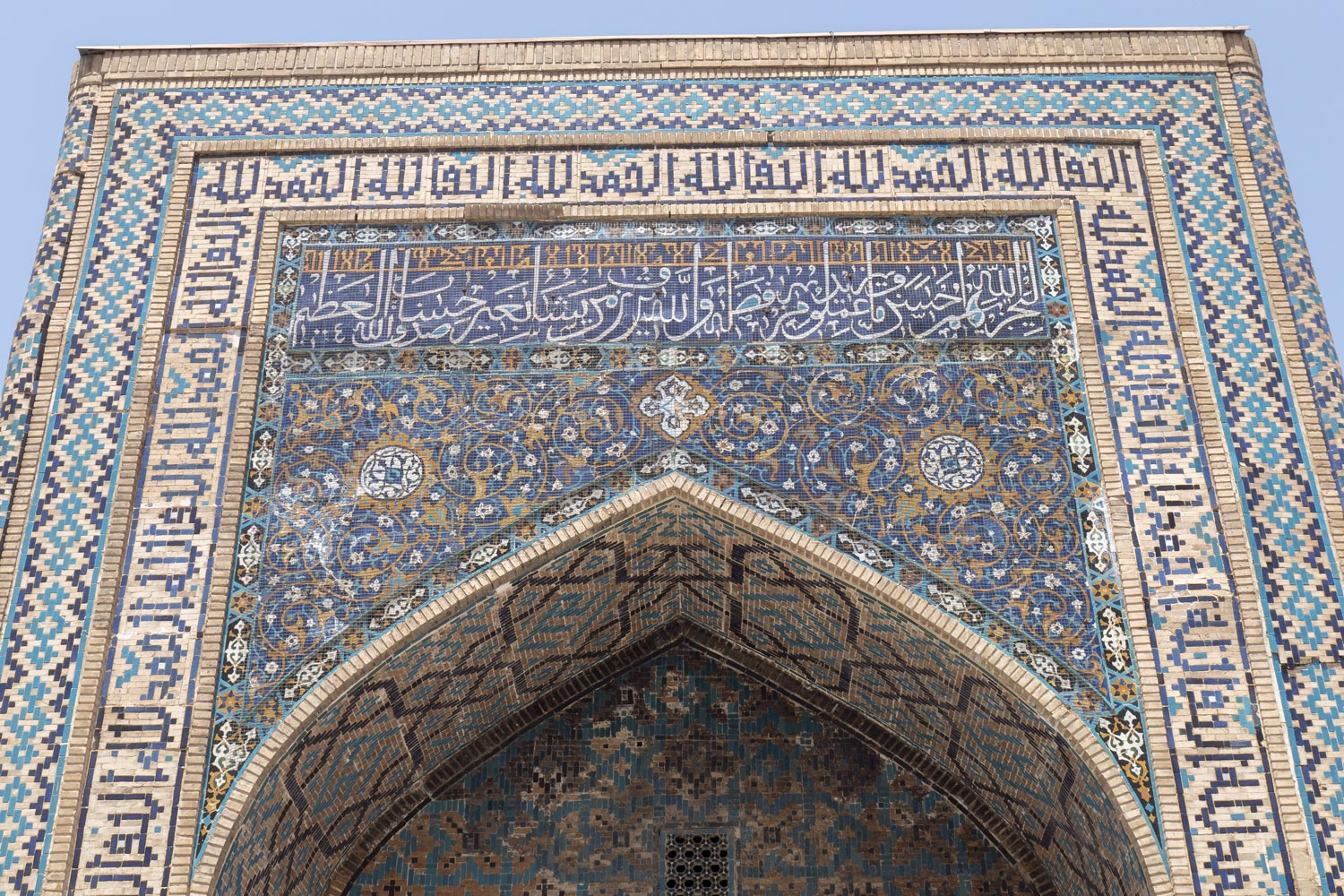
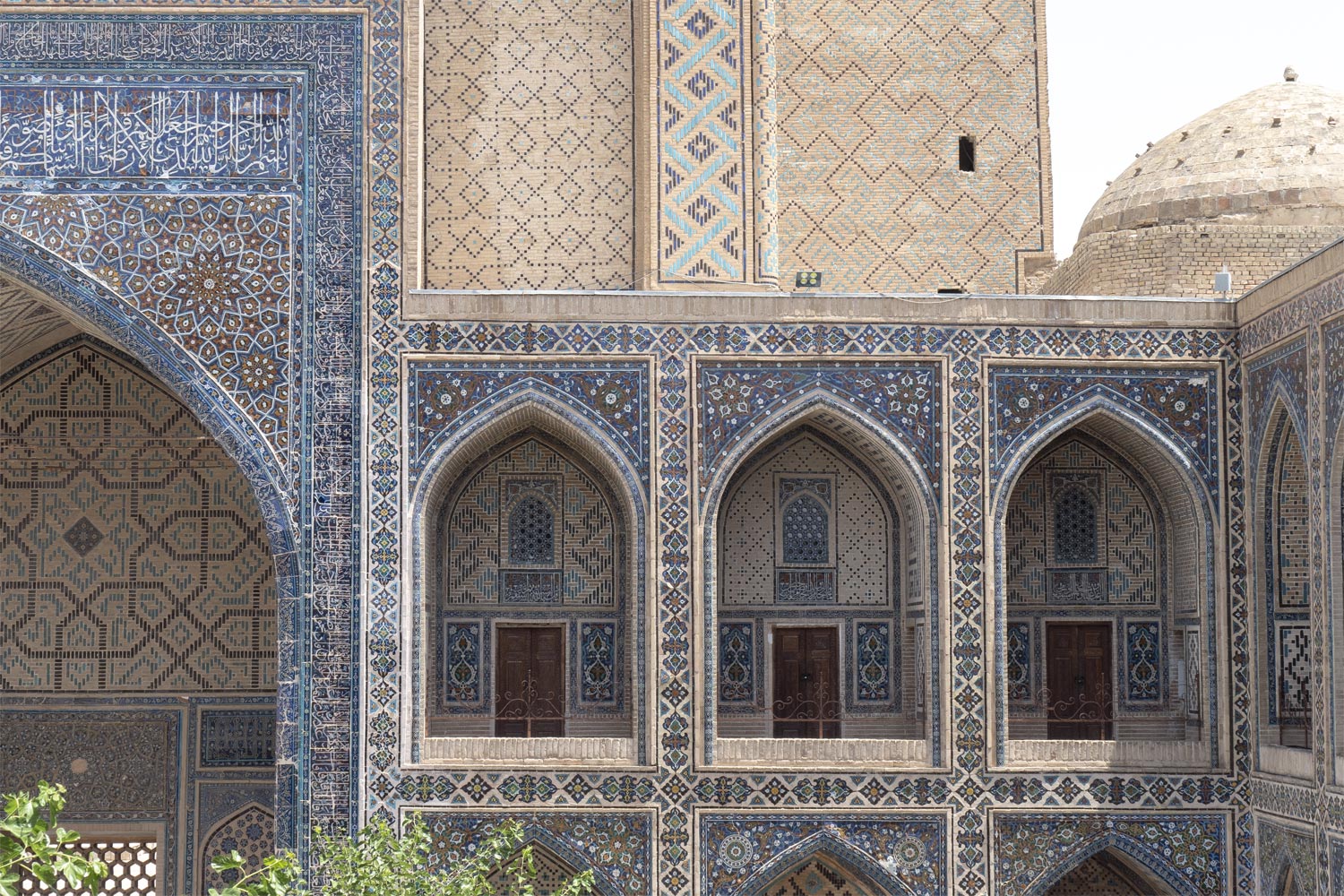
No Iran can even come close to comparing in beauty with Samarkand.
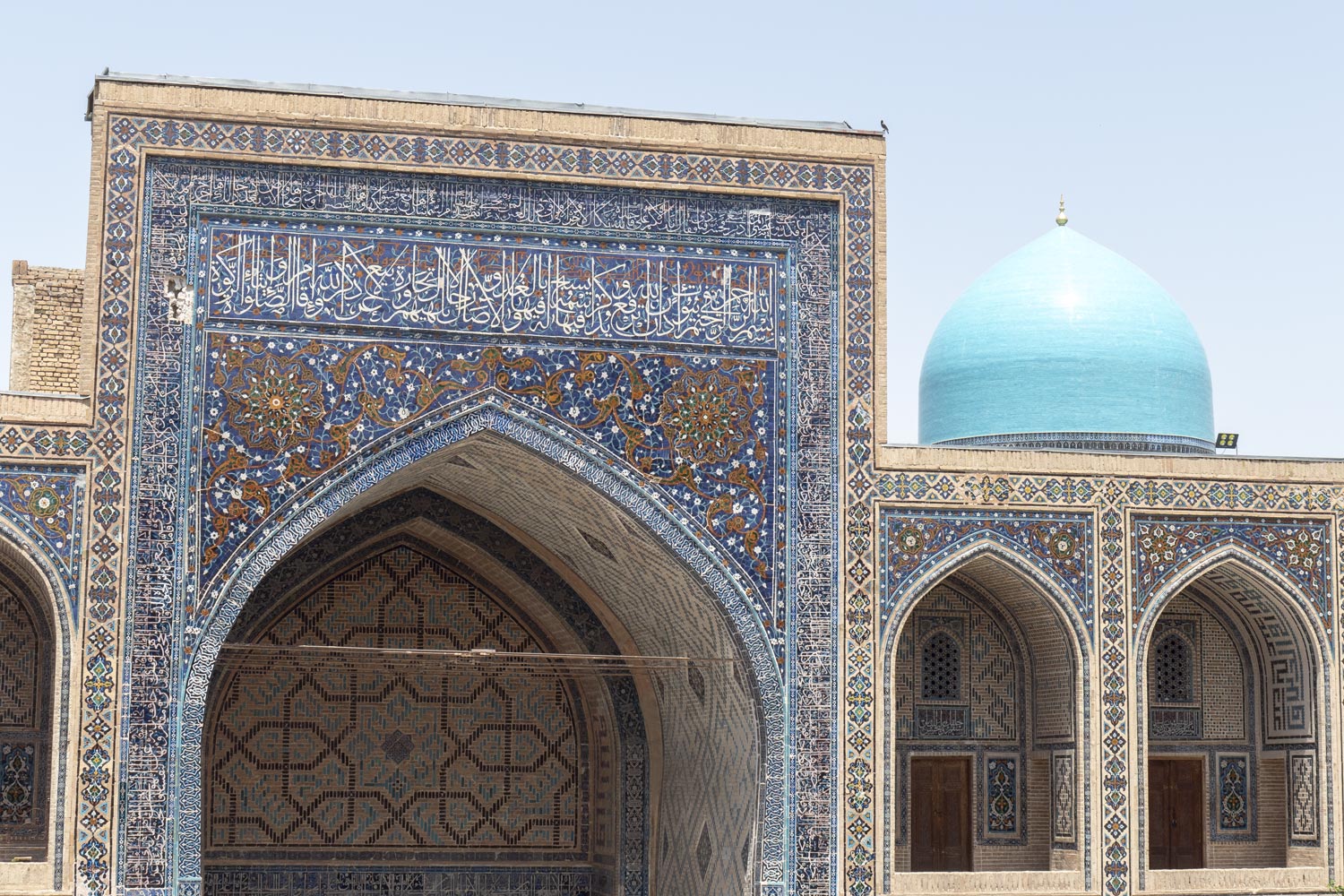
If ancient Muslims had colonized Mars, the landscape would look exactly like this.
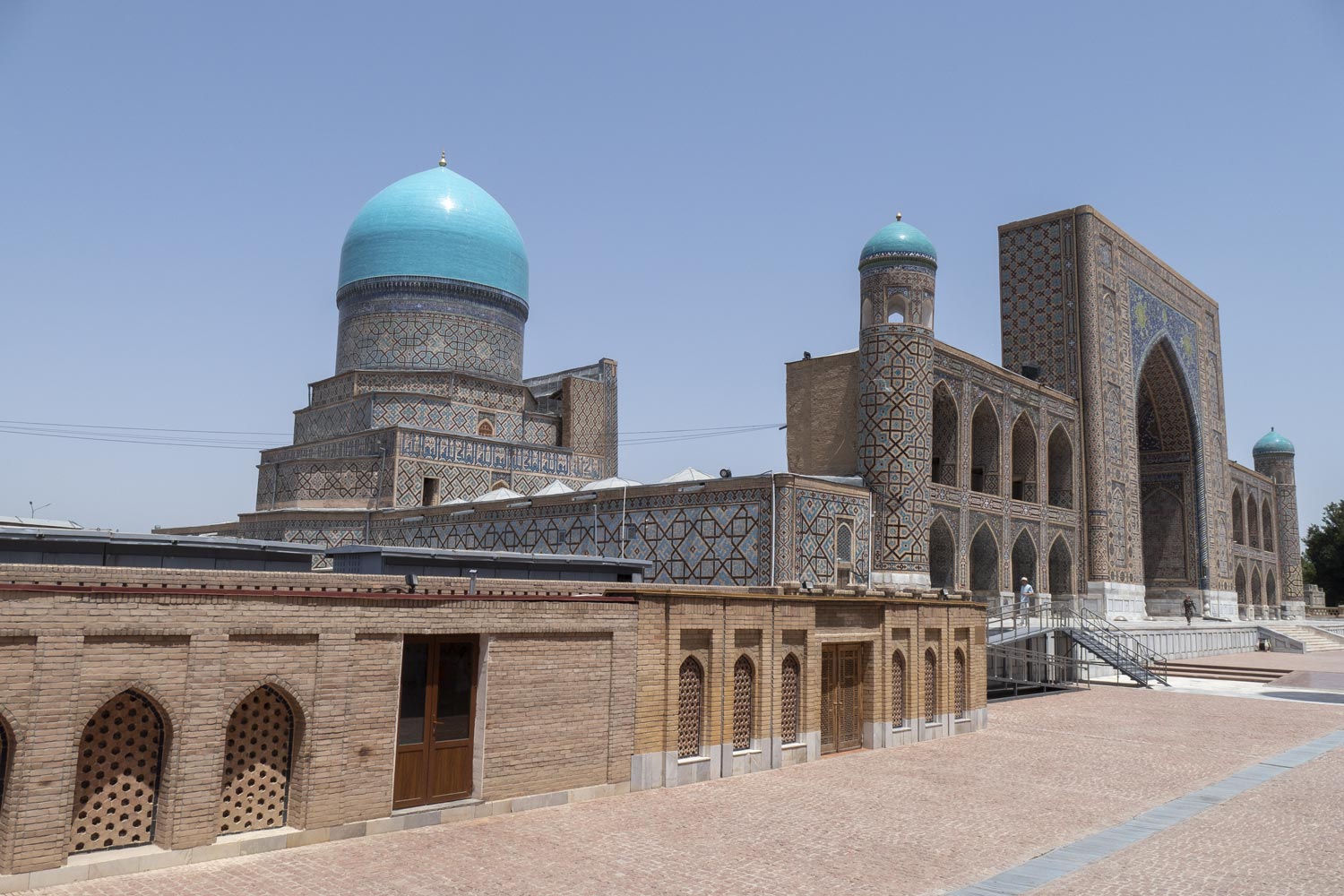
Two types of Arabic calligraphy: regular and Kufic script, adapted for tile work.
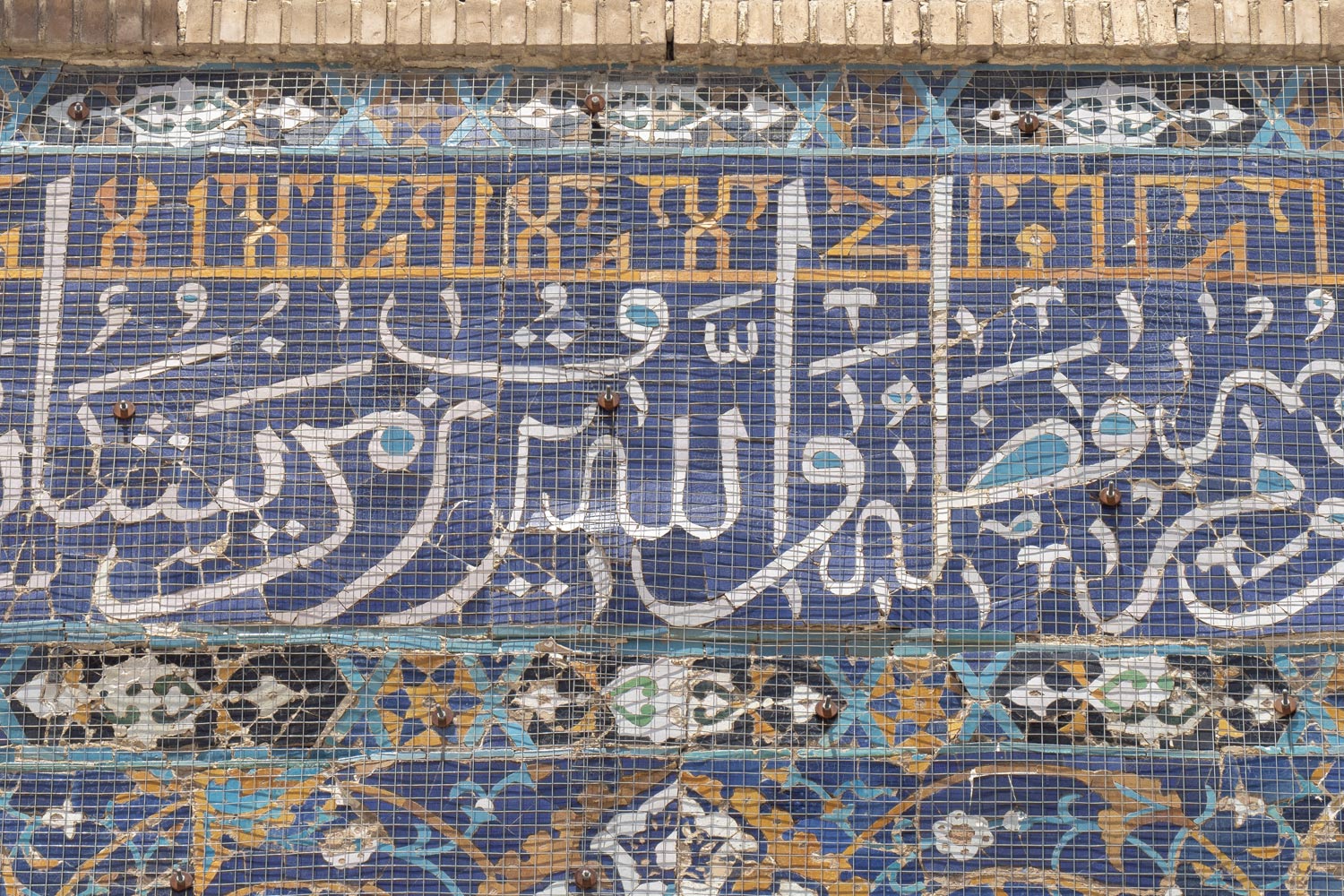
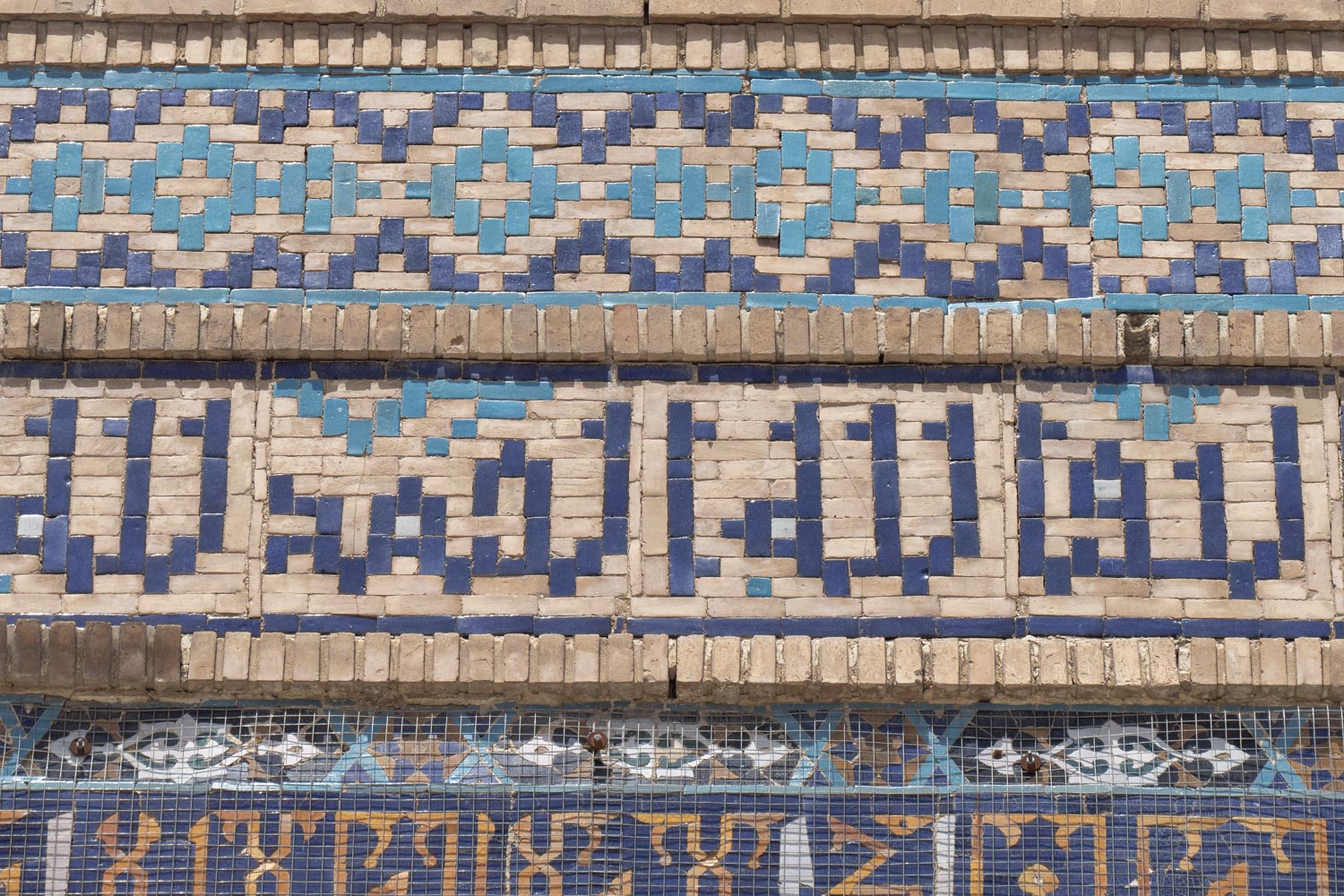
An absolutely incredible mosaic can be found on one of the madrasas. In Islam, it is forbidden to depict living beings, and it is doubly forbidden to do that on religious buildings.
And here, on the facade of a Muslim school in the heart of Samarkand, we see a mosaic depicting tigers hunting deer! And there is even a sun with a human face.
Such audacity of the artist quickly earned worldwide fame for the madrasa, and it came to be called Sher-Dor, which translates to “having tigers.”
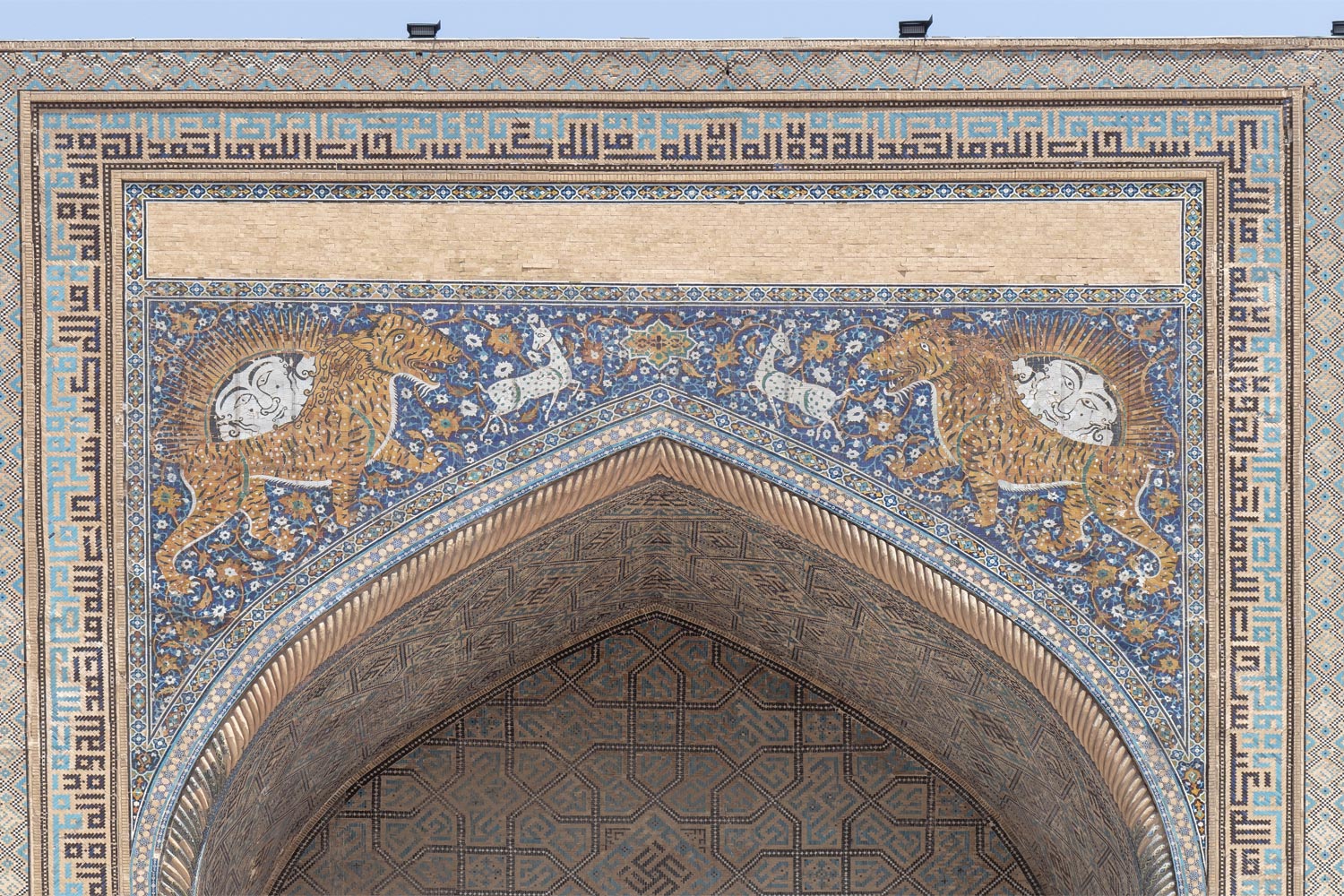
You can enter all three madrasas. One of them houses a museum, another has a small garden in the courtyard where coffee is served. However, we have seen all of this dozens of times.
The stunning beauty of Registan fully unfolds in the third madrasa, which is dedicated to the great Ulughbeg.
To my shame, I knew nothing about this remarkable scholar, despite having read many books on the history of science.
Ulughbeg was the grandson of Timur and ruled the empire after his death. But as a political figure, he is not at all interesting. The thing is, Ulughbeg was an astronomer, whose contribution to world science is on par with Copernicus and Galileo.
Therefore, in the third madrasa — a Muslim school — there is not just a collection of Qurans, but an actual astronomical museum! A model of the starry sky, painted in gold, stands surrounded by three scholars who are also teachers at the school. Their scientific supervisor, Muhammad Ulughbeg, dressed all in white, is giving a lecture to the students of the school.

On the ceiling of the madrasa, there is a depiction of a star map with labeled constellations.
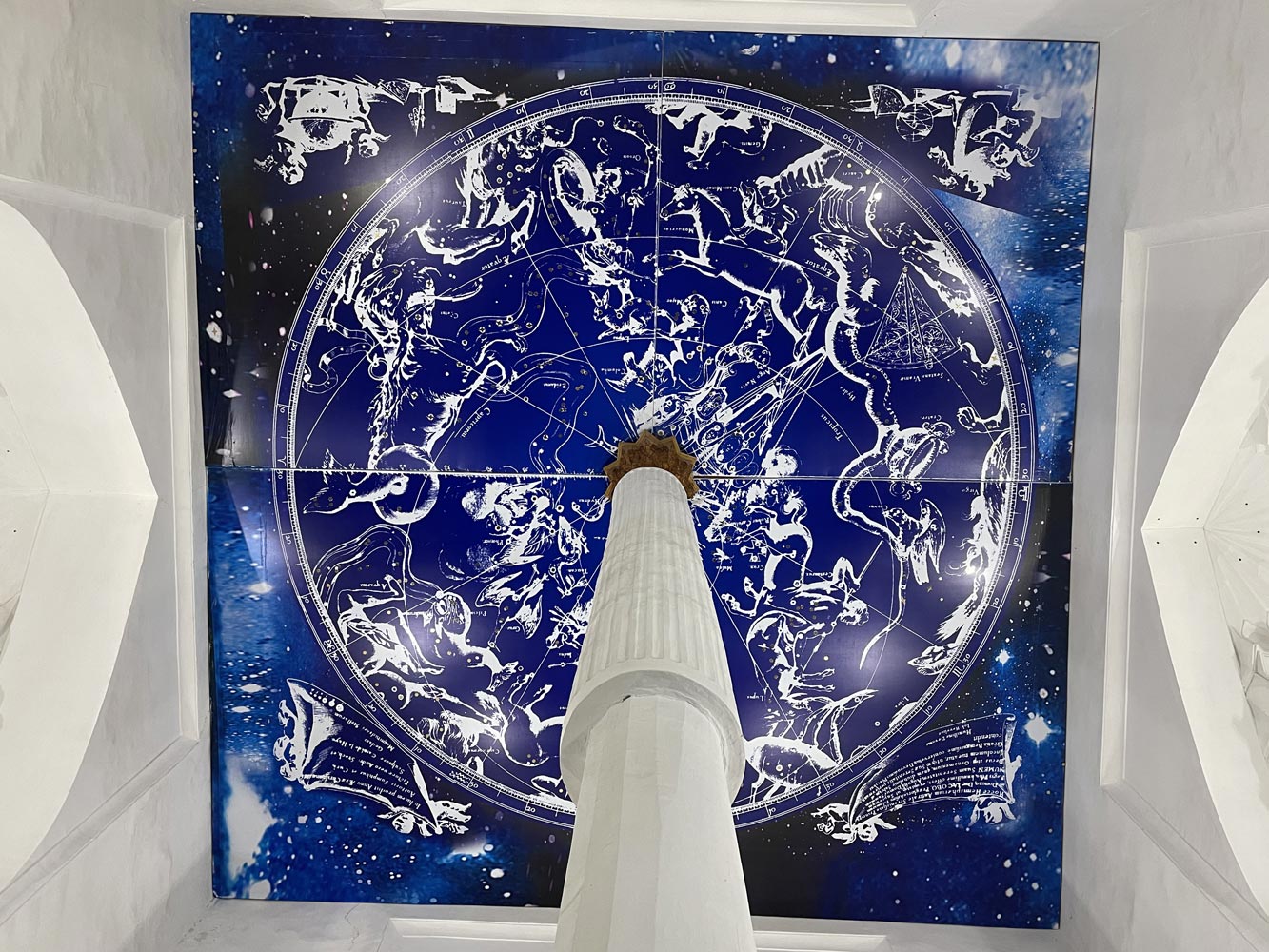
On the wall, there is an engraving depicting renowned astronomers: Tycho Brahe, Ptolemy, Copernicus, Hipparchus, and others. At first, I thought the painting was hanging as an illustration. Then I read the explanatory note.
“Jan Hevelius presents his book ’Messenger of Astronomy’ to the court of renowned astronomers of the world. Among them, Mirza Ulughbeg is also depicted.”
Rubbing my eyes, I looked at the engraving. Didn’t see any Ulughbeg. He began to carefully study each astronomer and only through the process of elimination did I discover that the third from the left was indistinctly labeled as Ulugh Beighi. This is the distorted name of Ulughbeg, separated by a space into two parts!
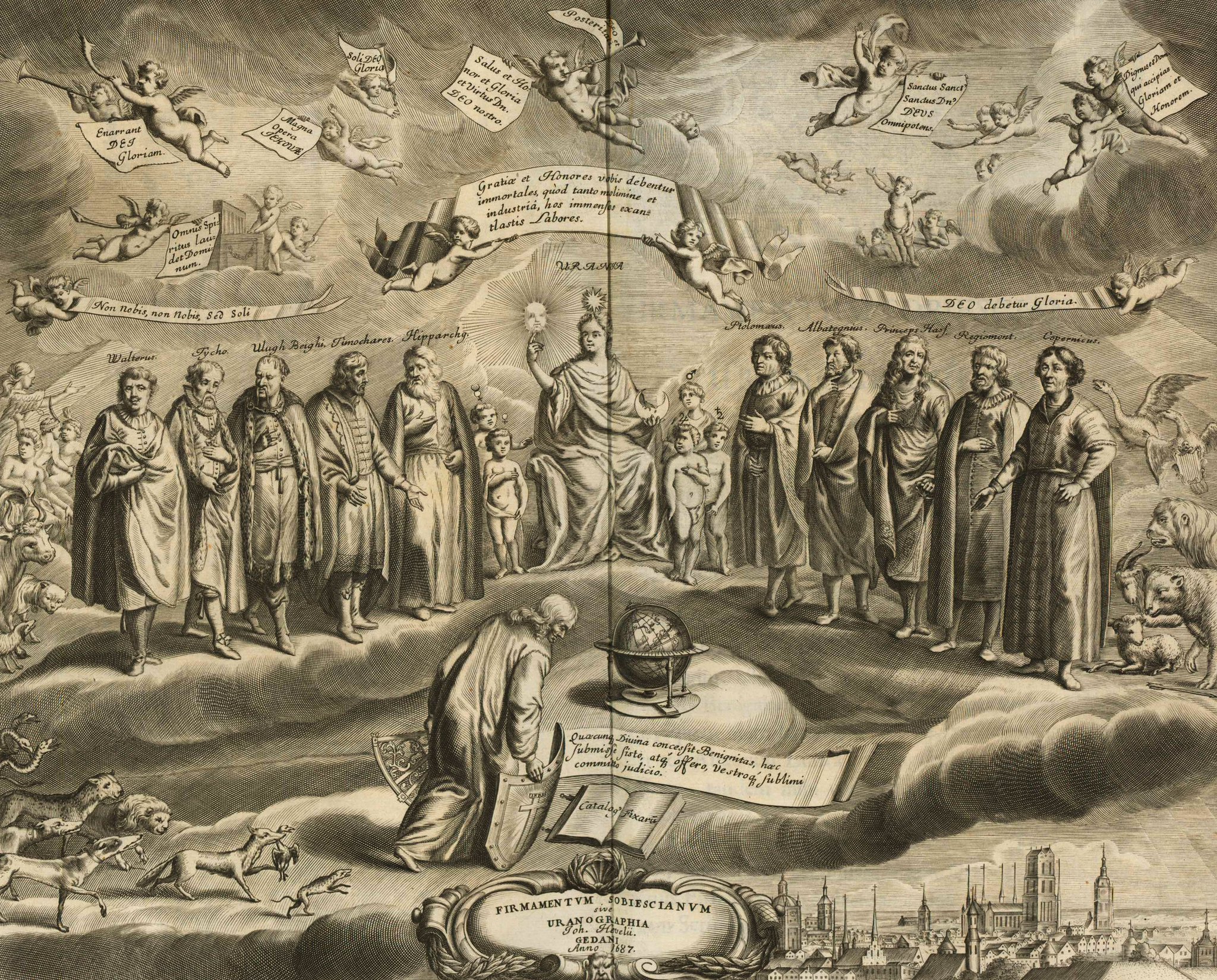
Citizens, I swear, at that moment I dropped the pince-nez from my eye, and my unshaven beard scattered like a Christmas tree in March.
Next to it, there was a second engraving by the same Jan Hevelius, where Ulughbeg (third from the left) is sitting at a table among the great astronomers, right across from Tycho Brahe and Ptolemy.
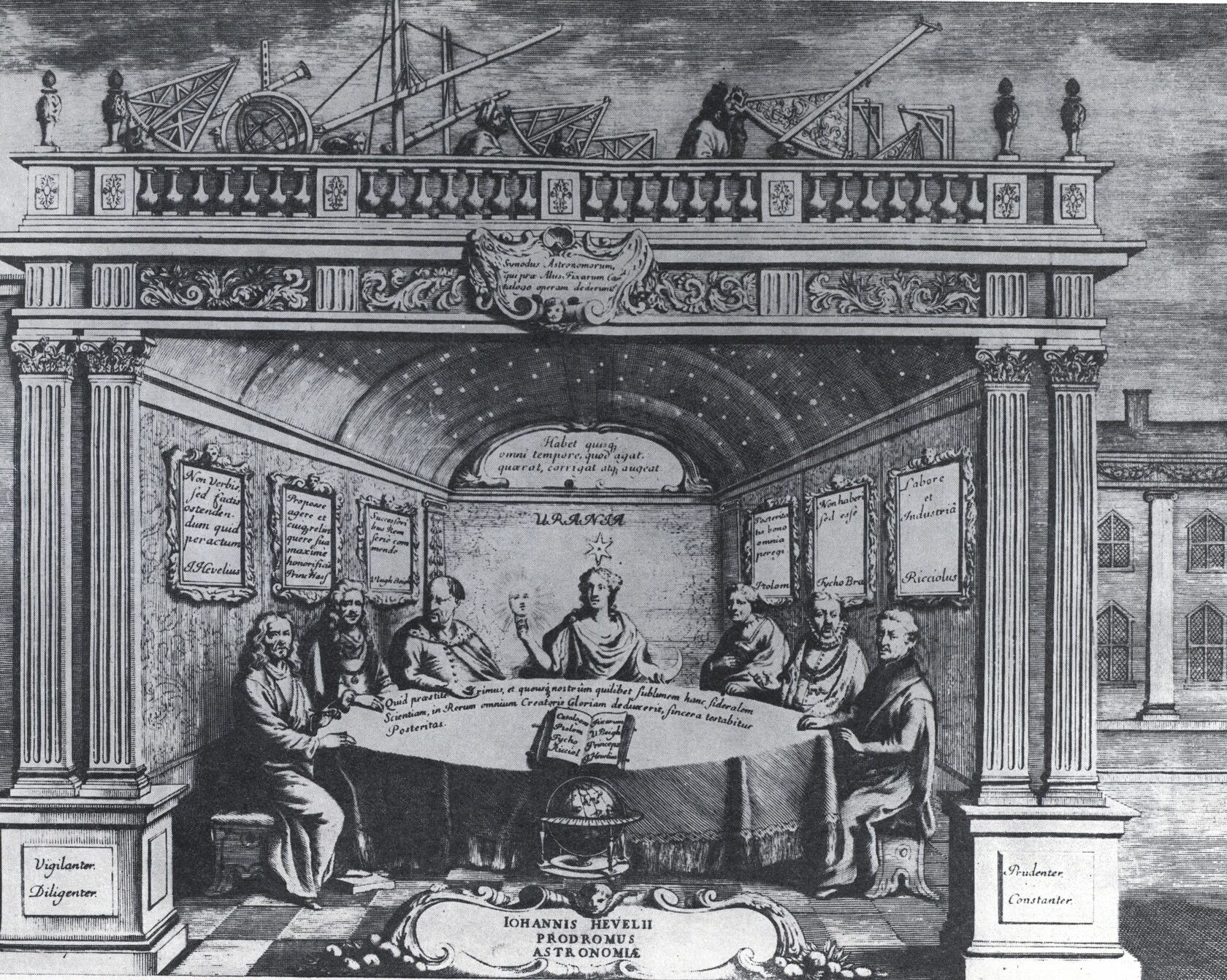
As a seasoned skeptic, I naturally didn’t believe what I saw. Uzbeks are known for legends of past greatness. For instance, some textbooks earnestly tell the tale that Uzbek scholars discovered America three hundred years before Columbus.
I recorded the names of all the engravings to check later at home. As a final step, took a couple more artifacts and continued exploring Samarkand.
Ulughbeg
According to the plan on the map, the next destination was marked as an observatory, which turned out to be Ulughbeg’s observatory.
An inconspicuous Persian-style arch is located on the outskirts of Samarkand. There is a peculiar structure extending behind the arch, and it’s not immediately clear what it is.
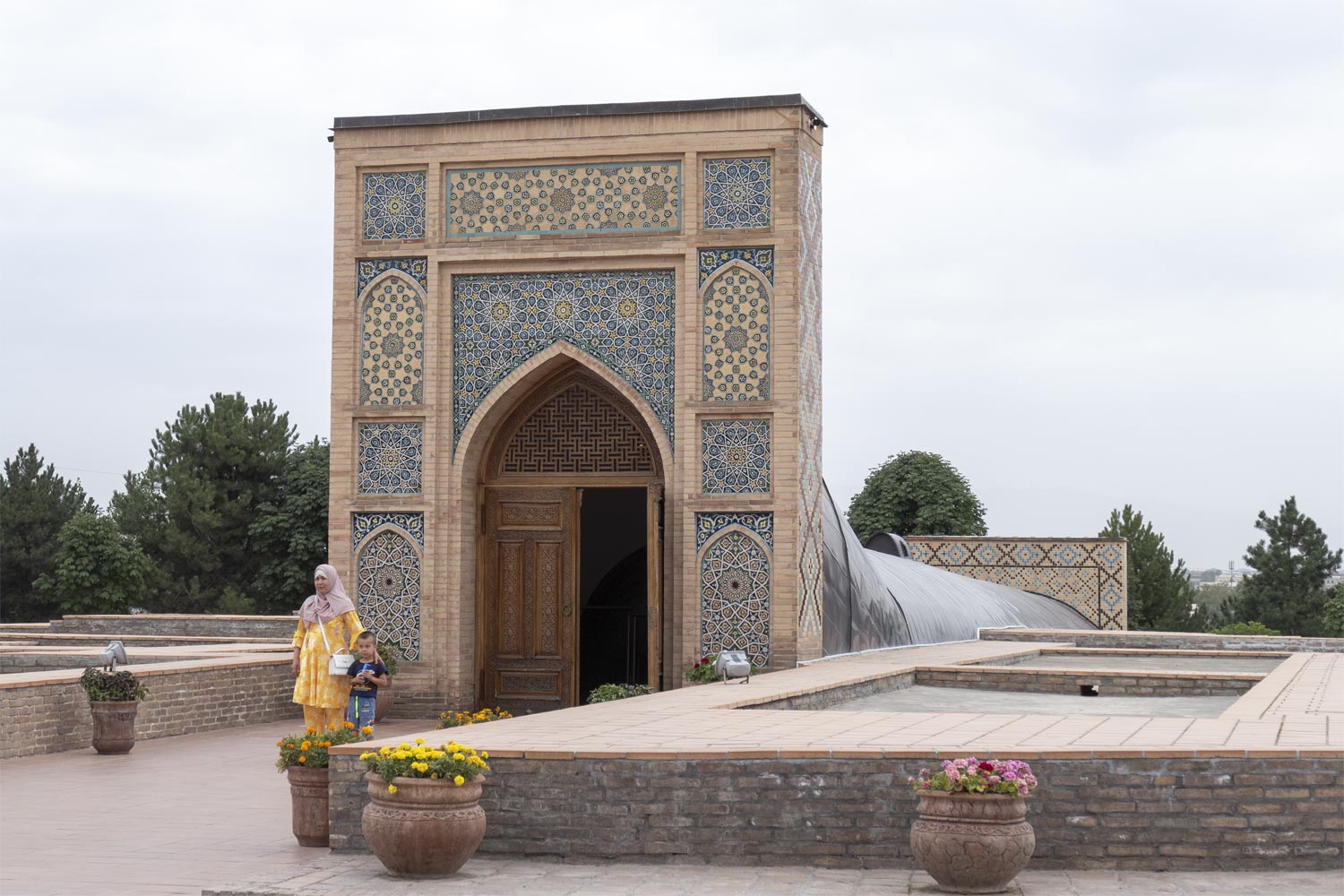
And this is a genuine underground observatory, built in 1429!
Inside the observatory, there is a massive underground sextant.
With the help of a sextant, angles of stars above the horizon are measured. Sailors used to use the sextant for navigation. It is typically a copper device consisting of a sighting tube, several mirrors, and a protractor arc, which is familiar to all of us from geometry lessons.
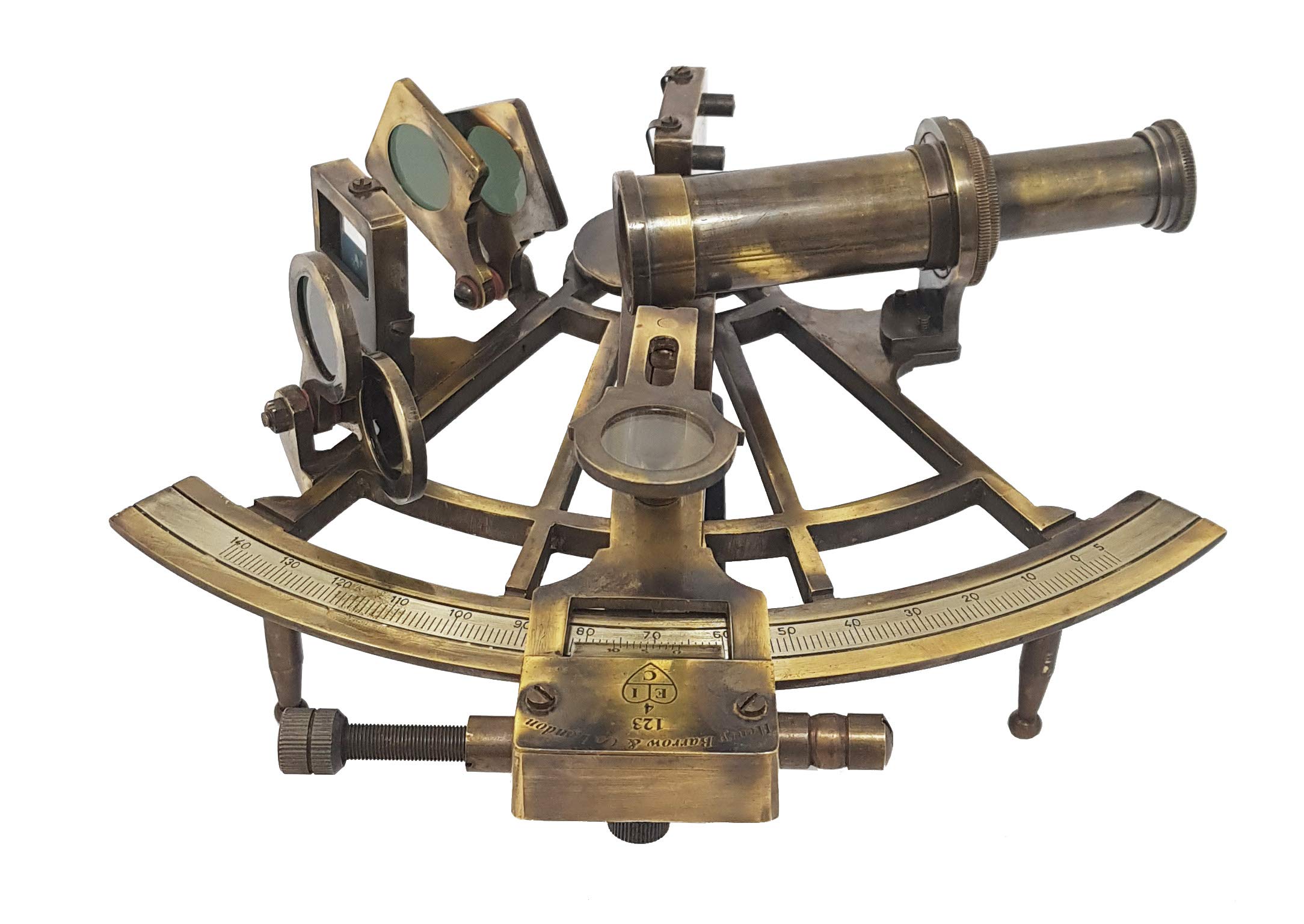
To measure the height of a star above the horizon using a sextant, one needs to look through the spy glass and smoothly rotate the handle, which simultaneously adjusts the small mirror and moves the pointer along the scale of the protractor. When a star comes into view, the pointer indicates the angle of the star above the horizon.
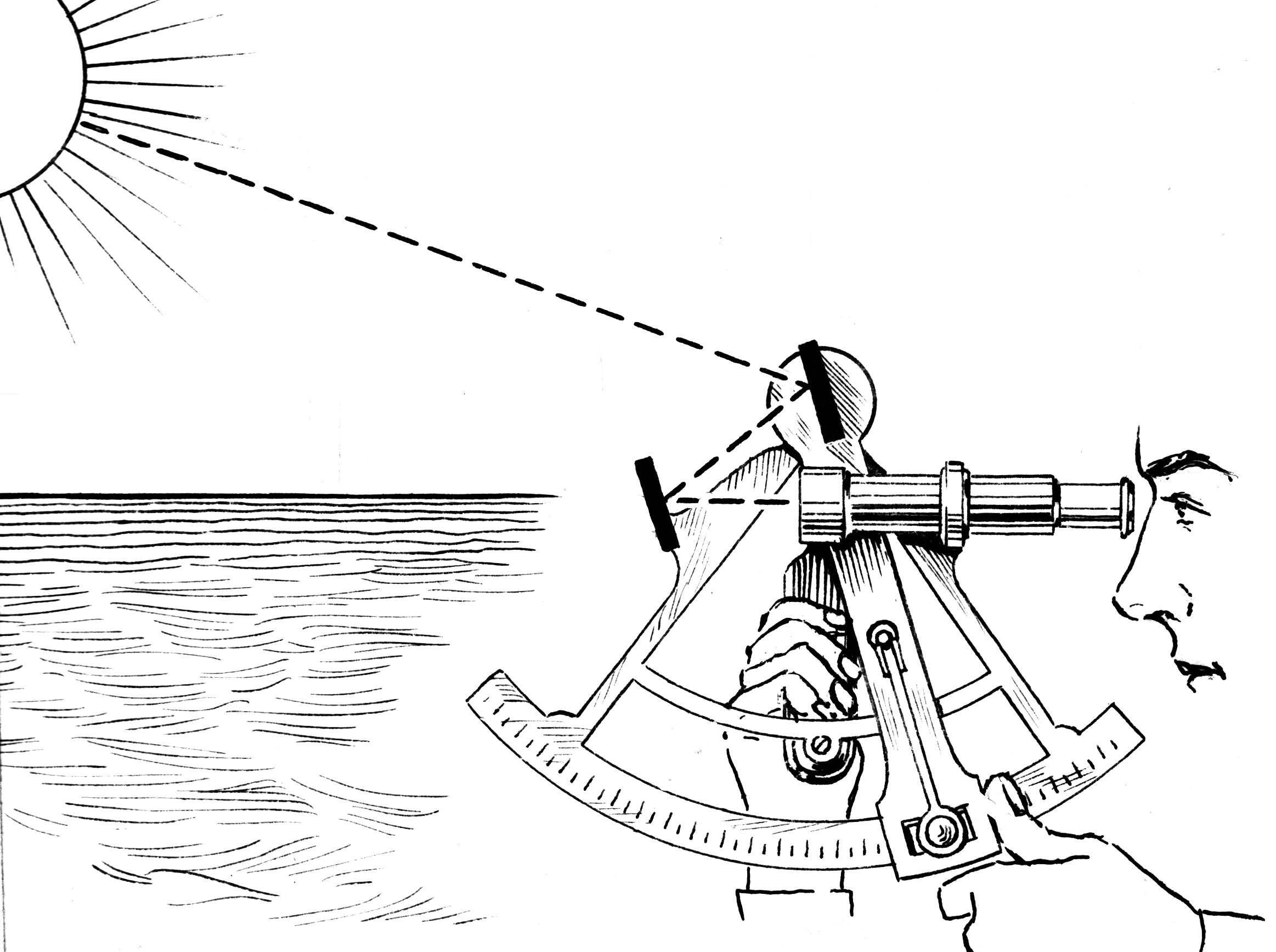
So, Ulughbeg’s observatory is a massive sextant with a radius of 40 meters, dug in the ground.
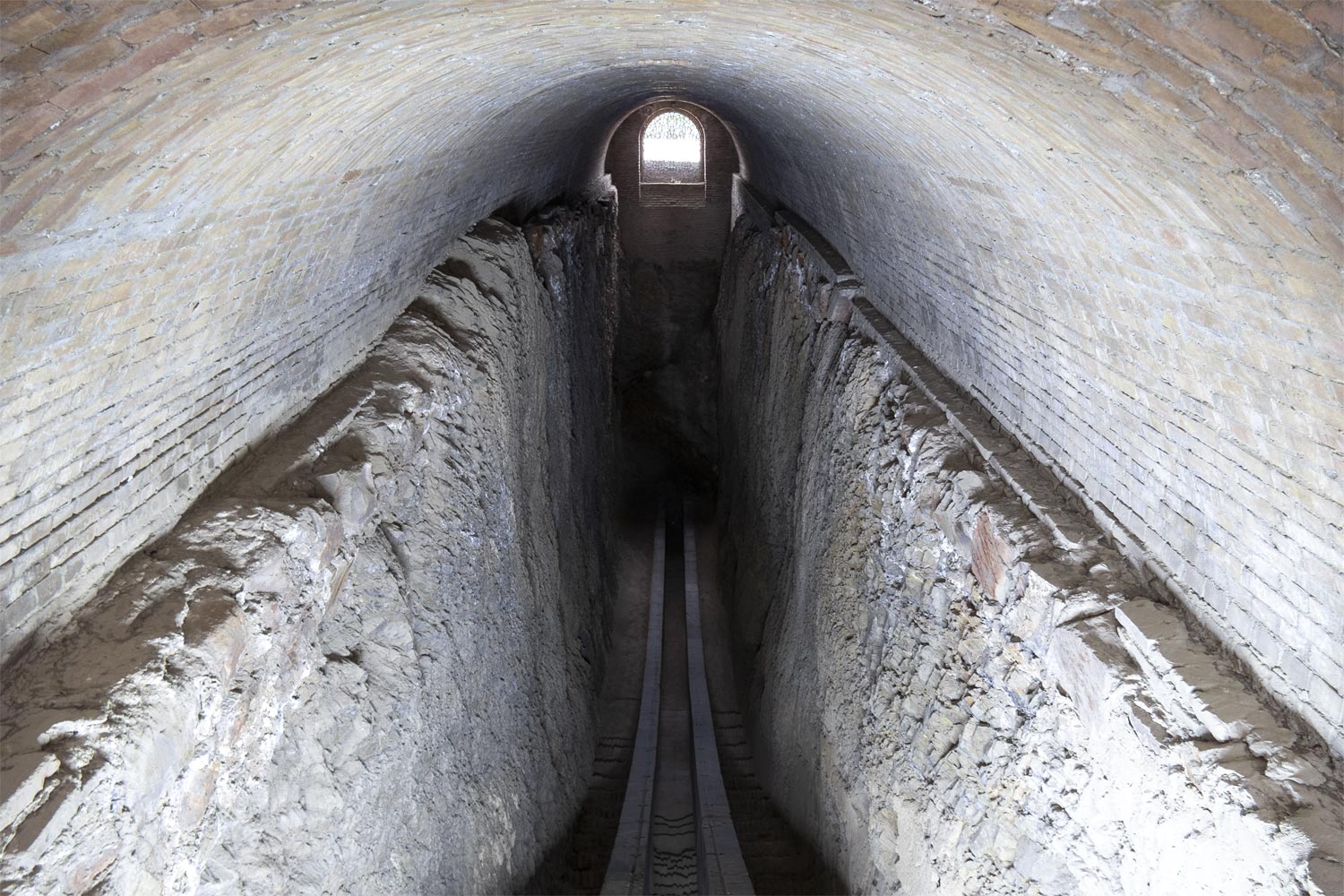
On the arc of this sextant, there are markings, each corresponding to a specific degree of a star above the horizon.
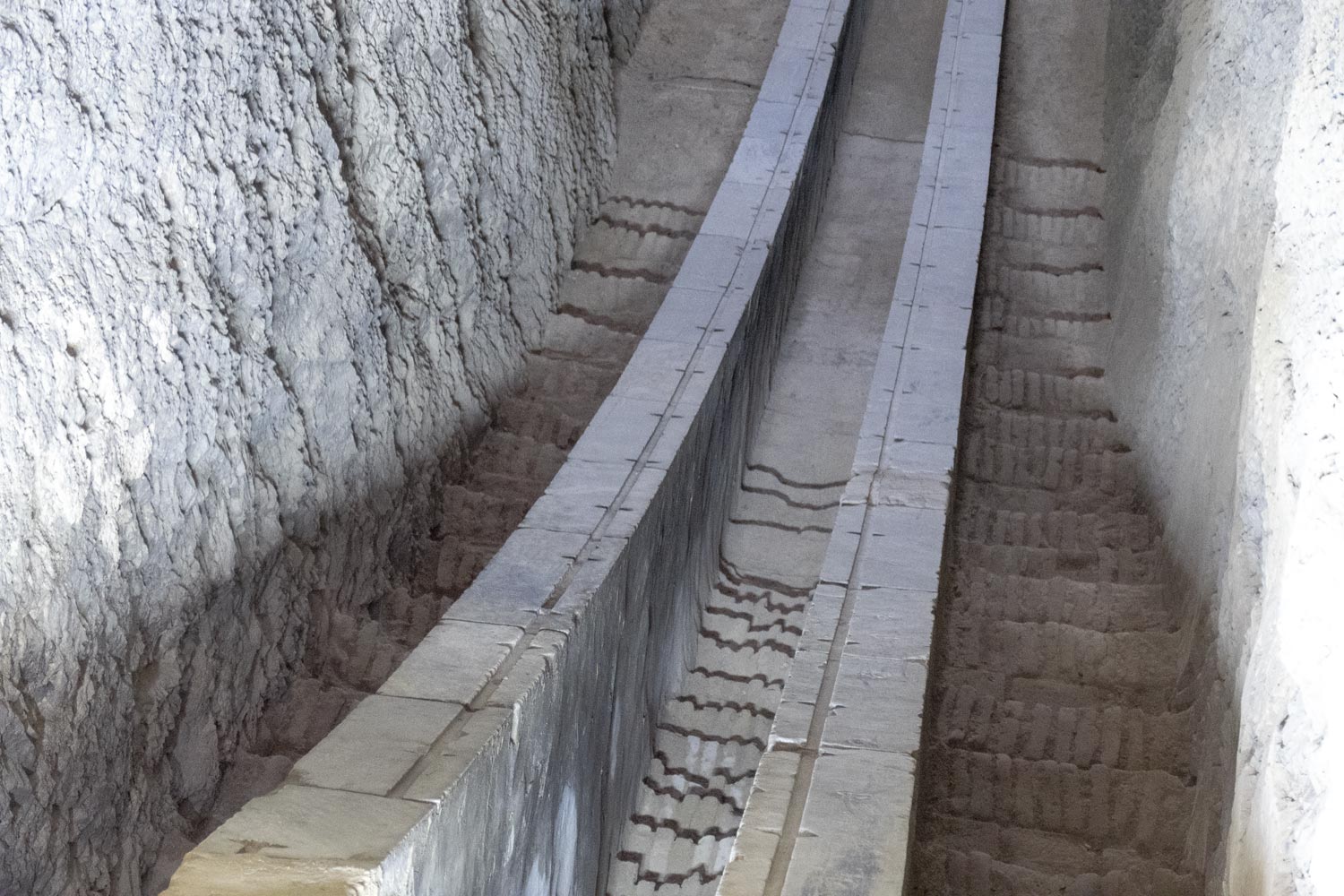
Unlike a small sextant, you can’t attach a handle with a mirror to the underground protractor. Therefore, a person played the role of the handle. Most likely, an Uzbek person.
The magnificent Samarkand protractor was equipped with three staircases. In the center, there was a staircase where the Mr. Observer walked to conduct measurements, capturing the desired star in the sky through a small aperture at a height of 28 meters. (All photographs of the observatory were taken through this aperture.)
Two assistants of the observer would walk along the staircases on the left and right of the protractor, pushing a cart. Once the observer spotted the star through the central observing slit, they would secure the cart. Attached to the cart, an arrow would indicate the desired angle on the giant protractor, while a vernier scale, known as the nonius, was placed on the cart itself to provide more precise angle values. To enhance the observer’s accuracy, an additional target would be installed in the slit to precisely capture the star.
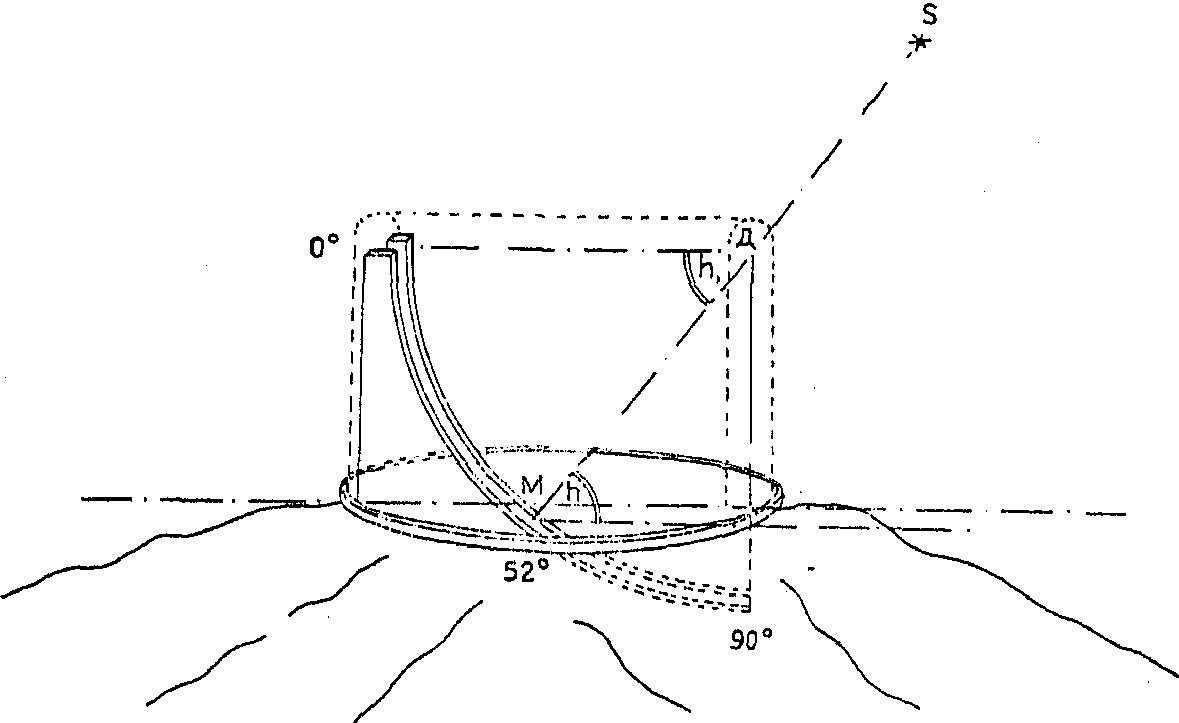
Measurements at Ulughbeg Observatory were conducted for many years and were recorded in the book “Zij-i Ulugh Beg,” which was published in 1437 in Samarkand. The cover of this book is displayed in Ulughbeg Madrasah, but this edition was released in London in 1665.
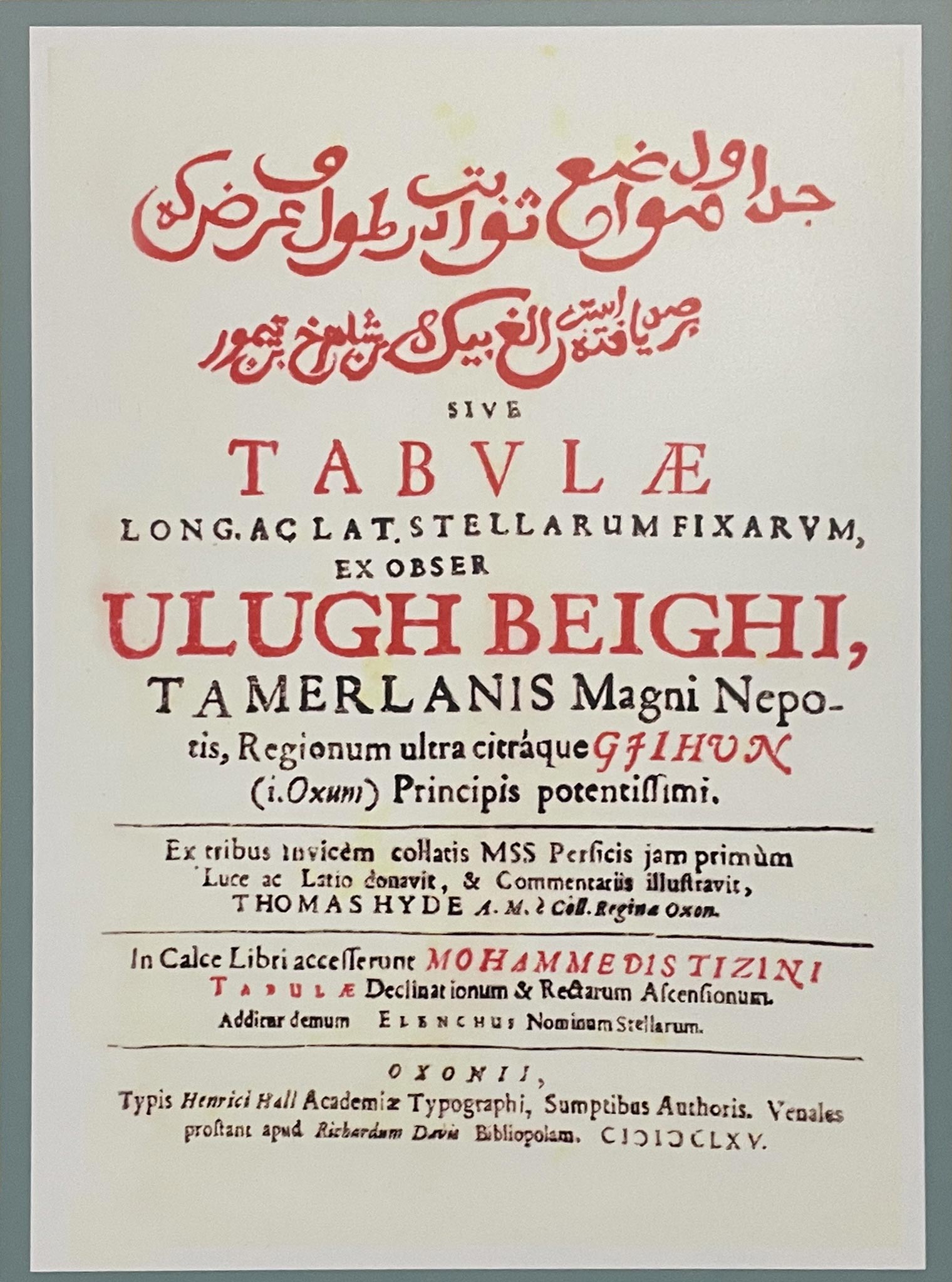
Zij-i Ulugh Beg is one of the largest medieval catalogs of the starry sky, containing information about 1018 stars. It also provides the accurate length of a year: 365 days, 6 hours, 10 minutes, 8 seconds.
According to modern measurements, a year lasts 365 days, 6 hours, 9 minutes, and 9.8 seconds. Thus, Ulughbeg’s measurements were off by only 58 seconds. And this was in the year 1438!

Unfortunately, Ulughbeg was not only a scientist but also a ruler of the Timurid Empire since he was none other than the grandson of Tamerlane himself.
Therefore, the fate of this outstanding scholar is quite tragic. Ulughbeg was killed in 1449 during a battle against his own son’s army, due to a political conflict. The observatory continued to function after Ulughbeg’s death but was later forgotten and lost for many years. It was only excavated in 1908.
A crater on the Moon and minor planet number 2439 are named after the great Ulughbeg.
Mausoleums of the Timurids
In addition to the mausoleum of Tamerlane himself, there is a whole complex of mausoleums in Samarkand where his relatives and companions are buried. This place is called Shah-i-Zinda, which translates to “the living king,” and it includes a total of 13 mausoleums.
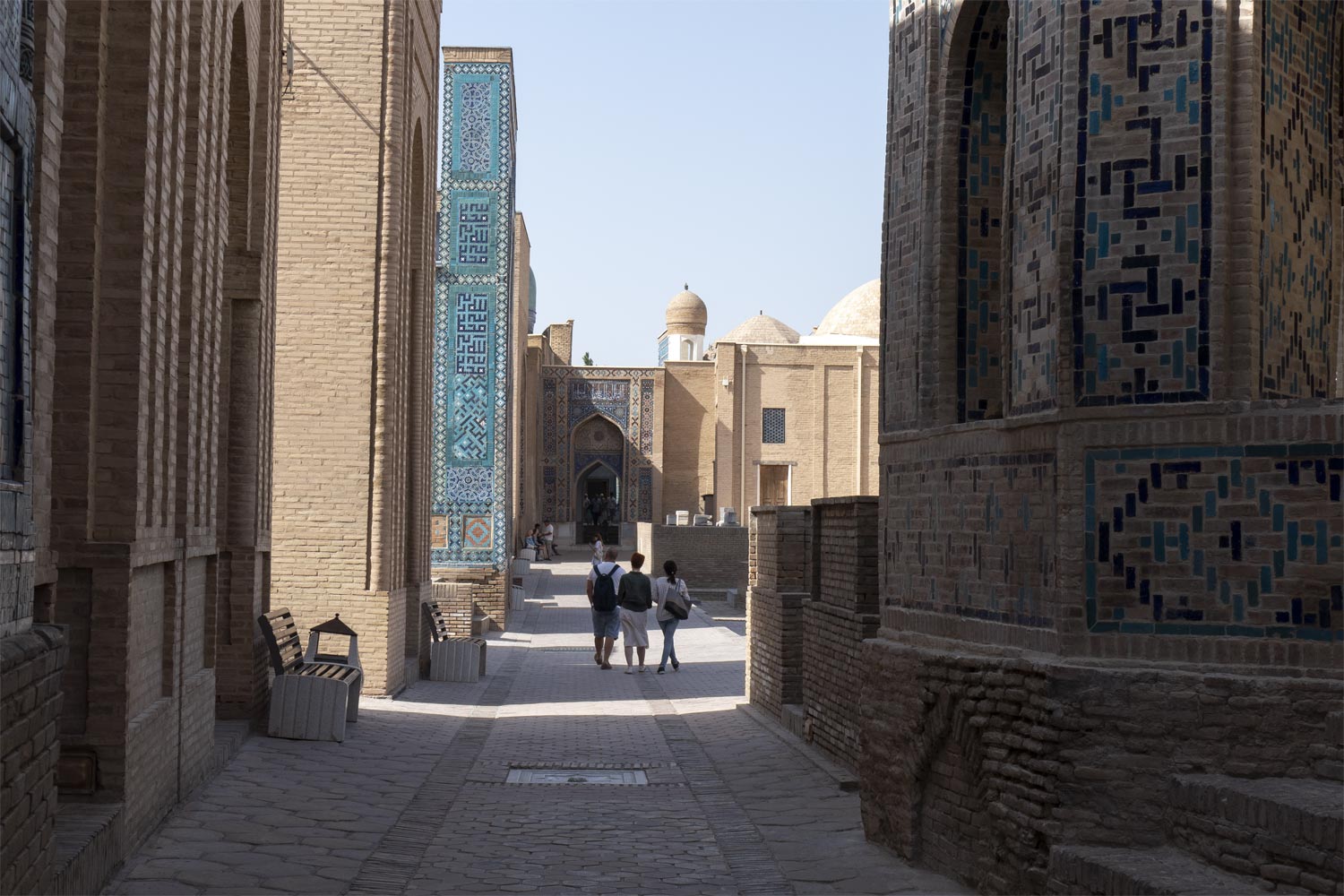
I don’t think anyone is genuinely interested in studying each mausoleum individually and who is buried in them. Just look at this incredible beauty.
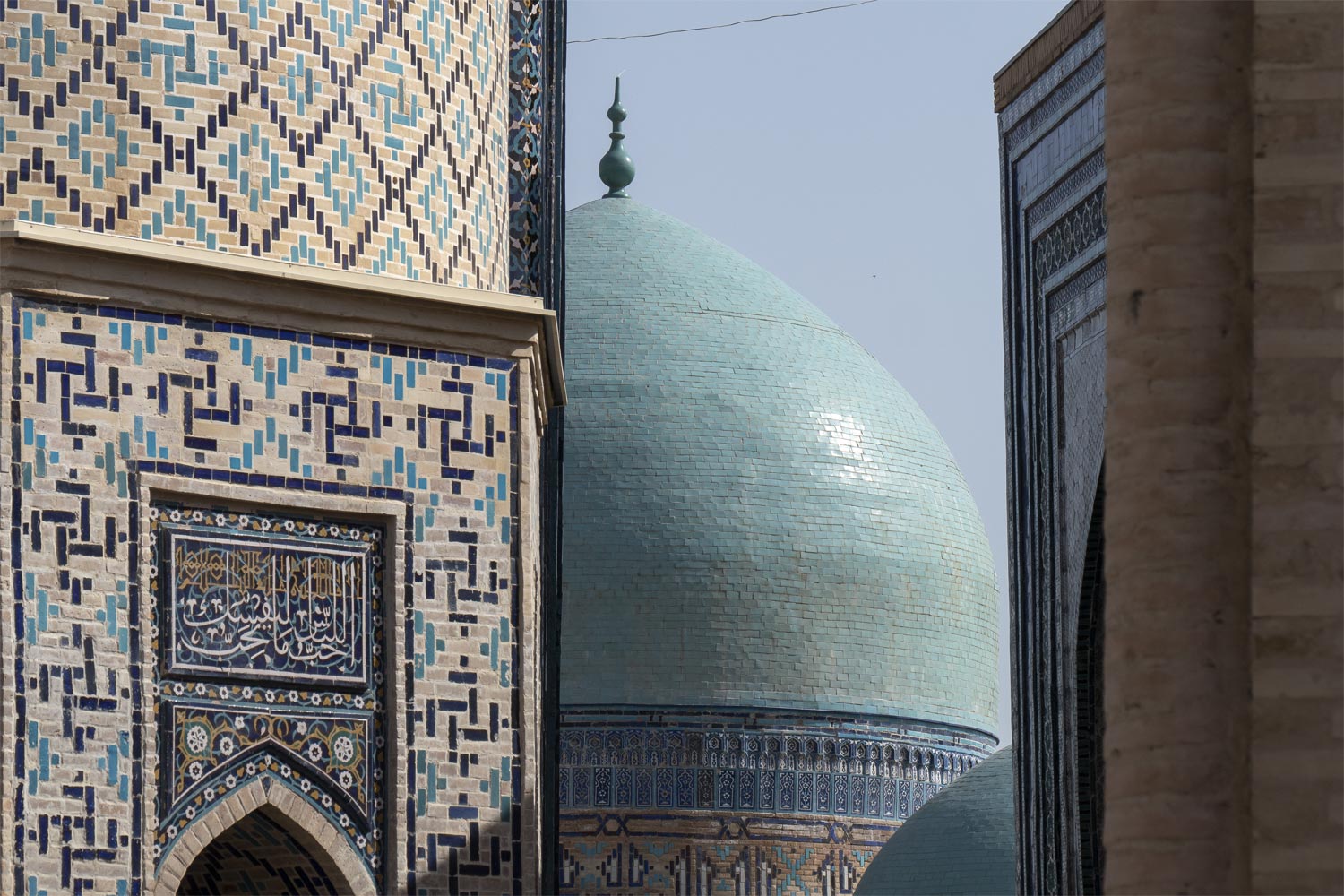
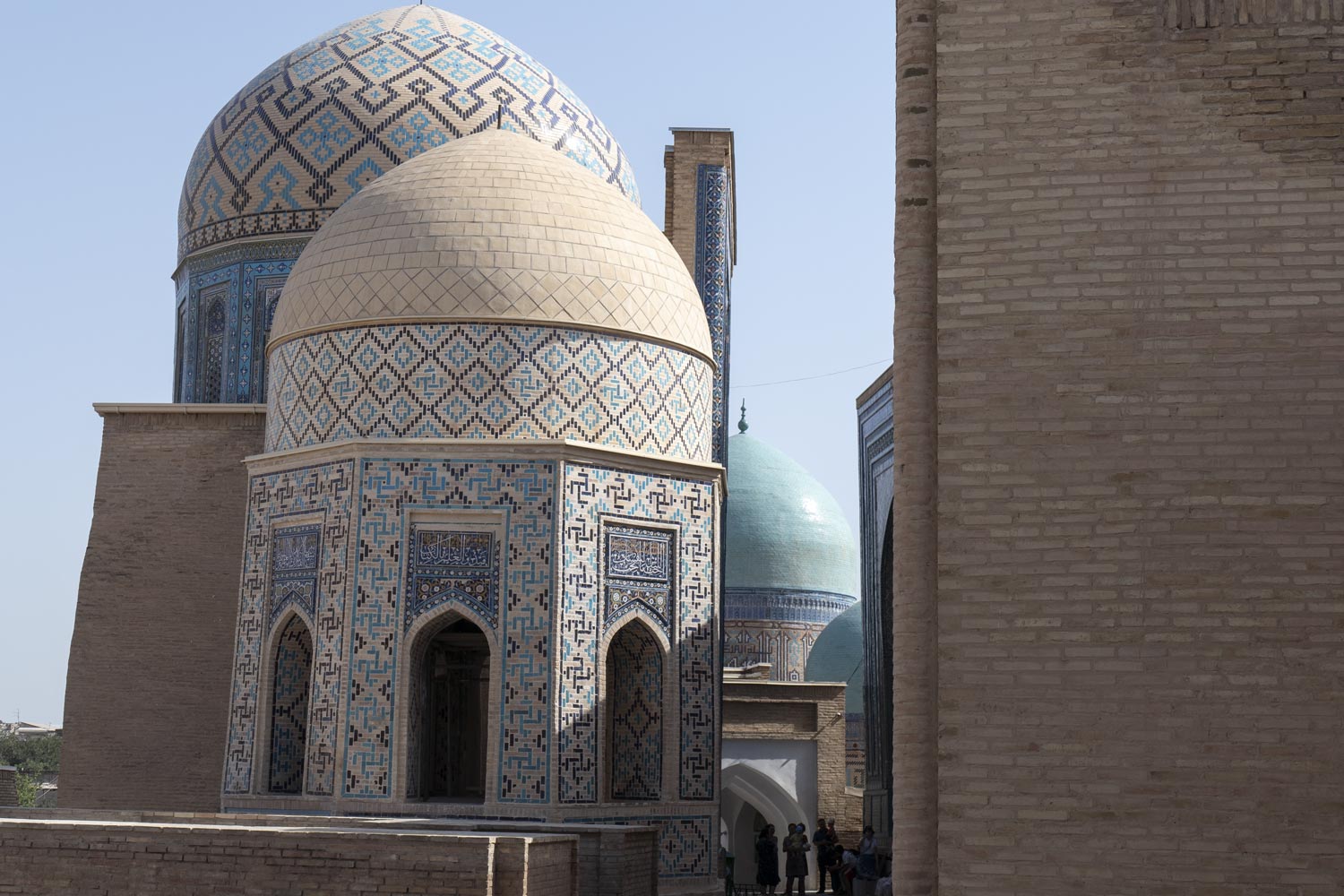
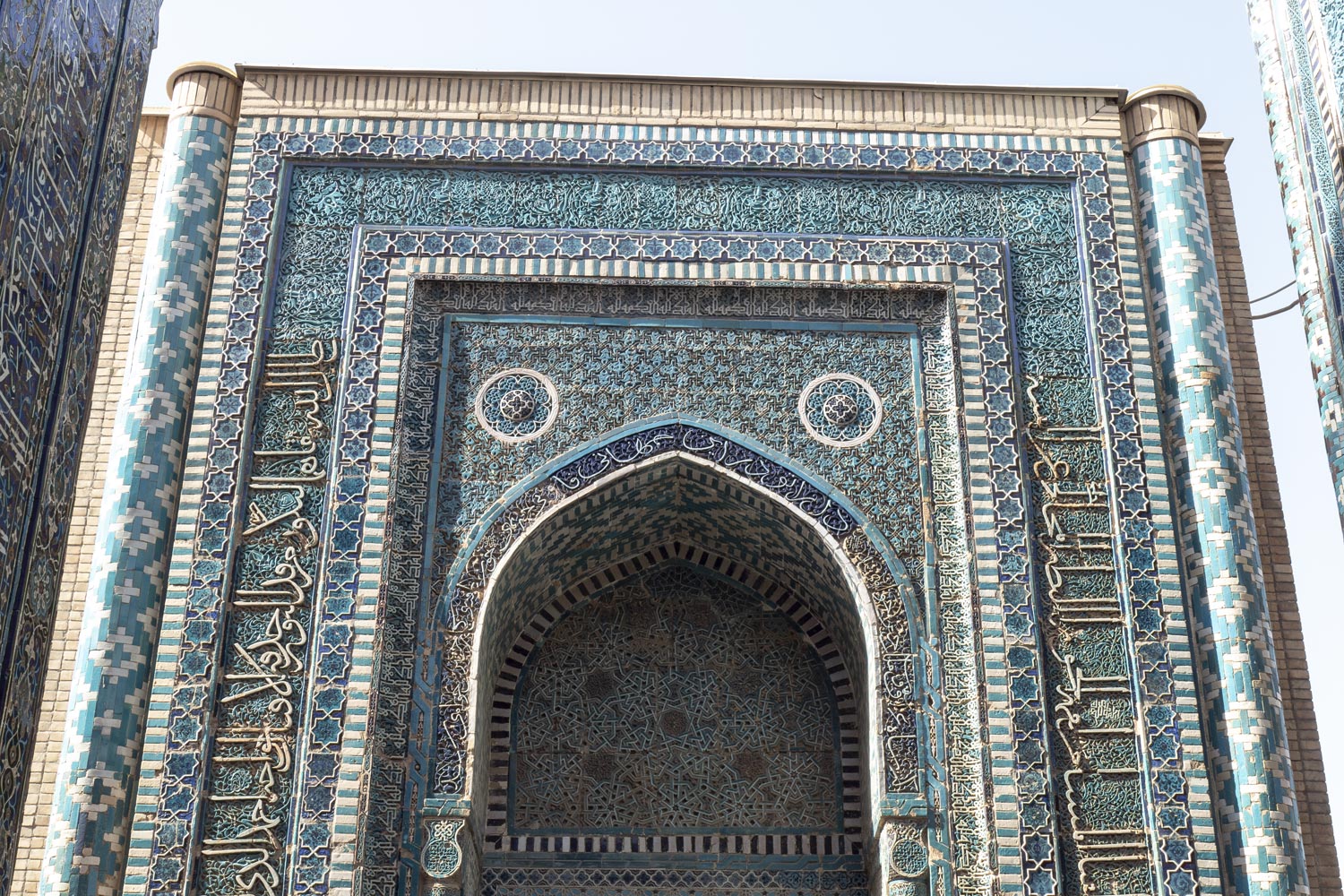
Shah-i-Zinda complex is probably the most incredible, colorful, elegant, and beautiful place not only in Samarkand but also in the entire Middle East.
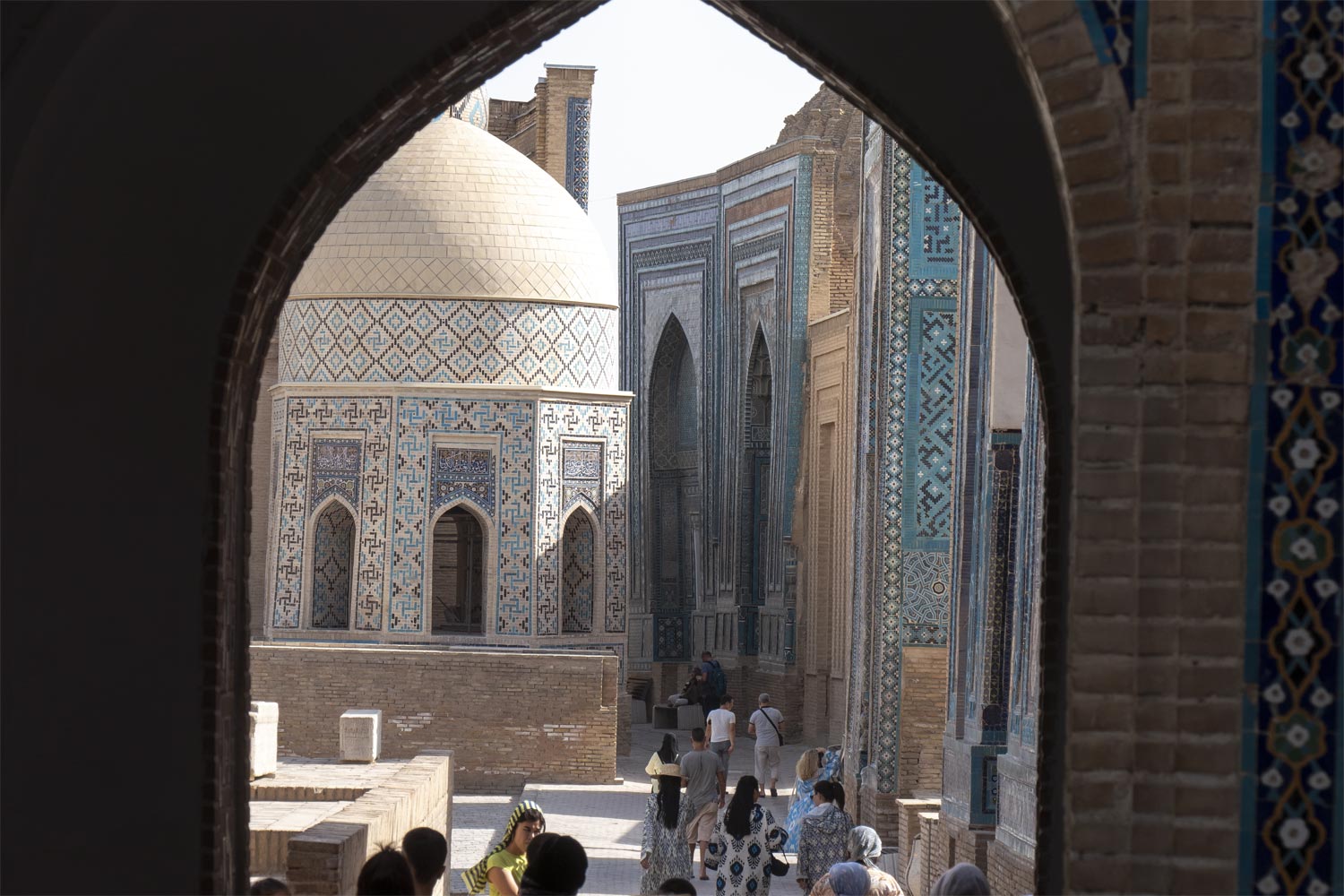
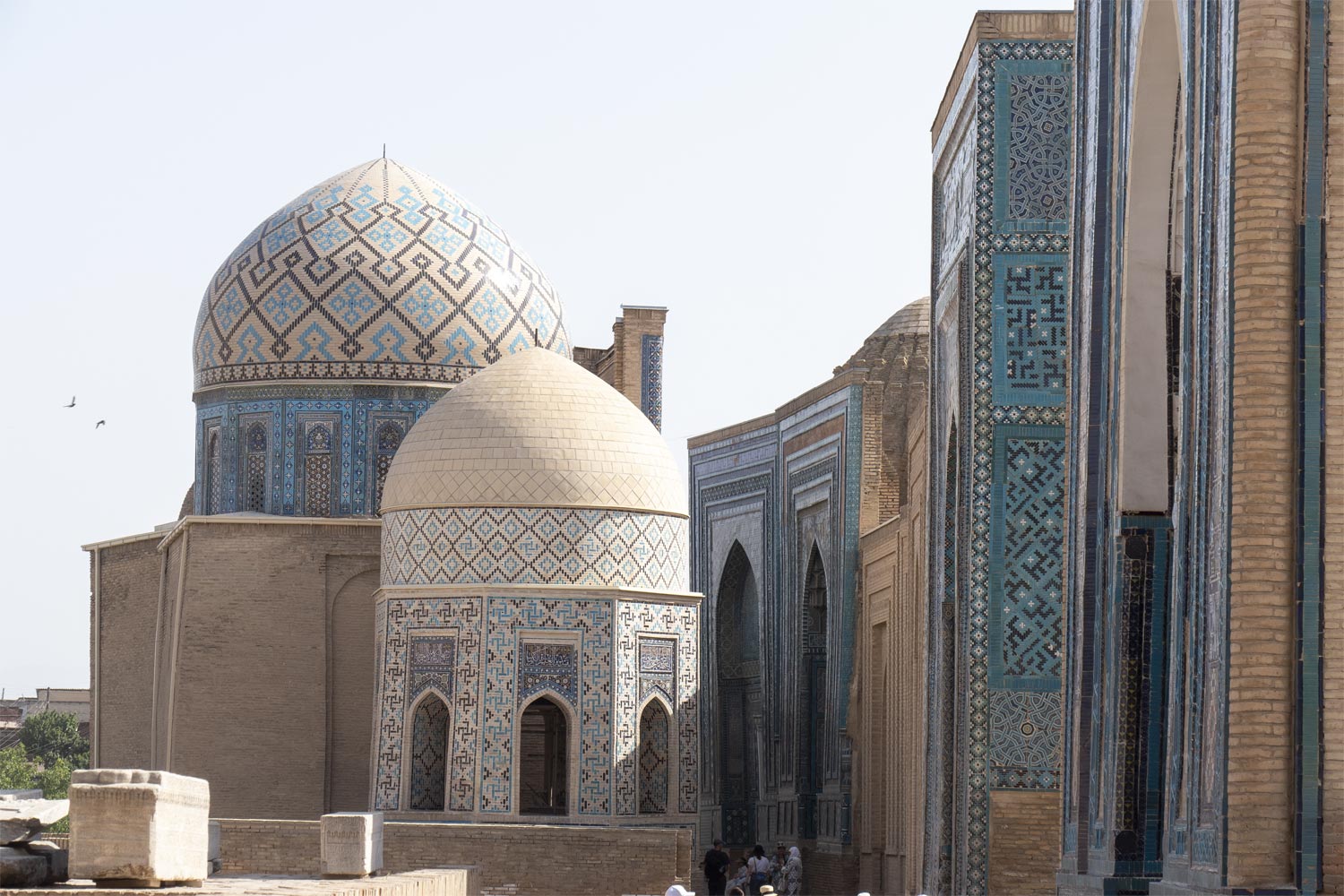
I traveled to Iran specifically for such photographs, but I didn’t find them in that country. Only Uzbekistan finally showed me the real East.
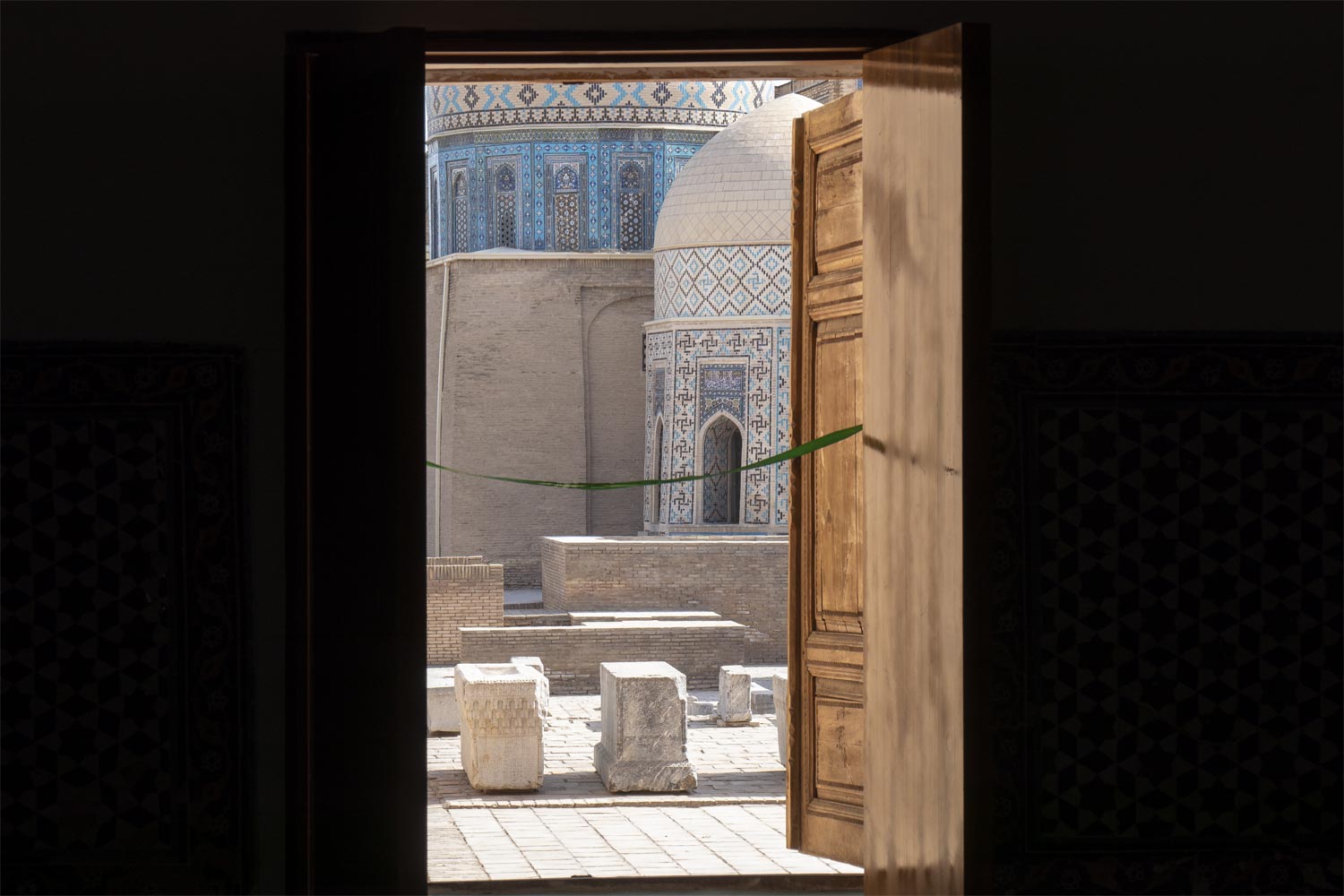
It is unfathomable how much effort was invested in creating such beauty.
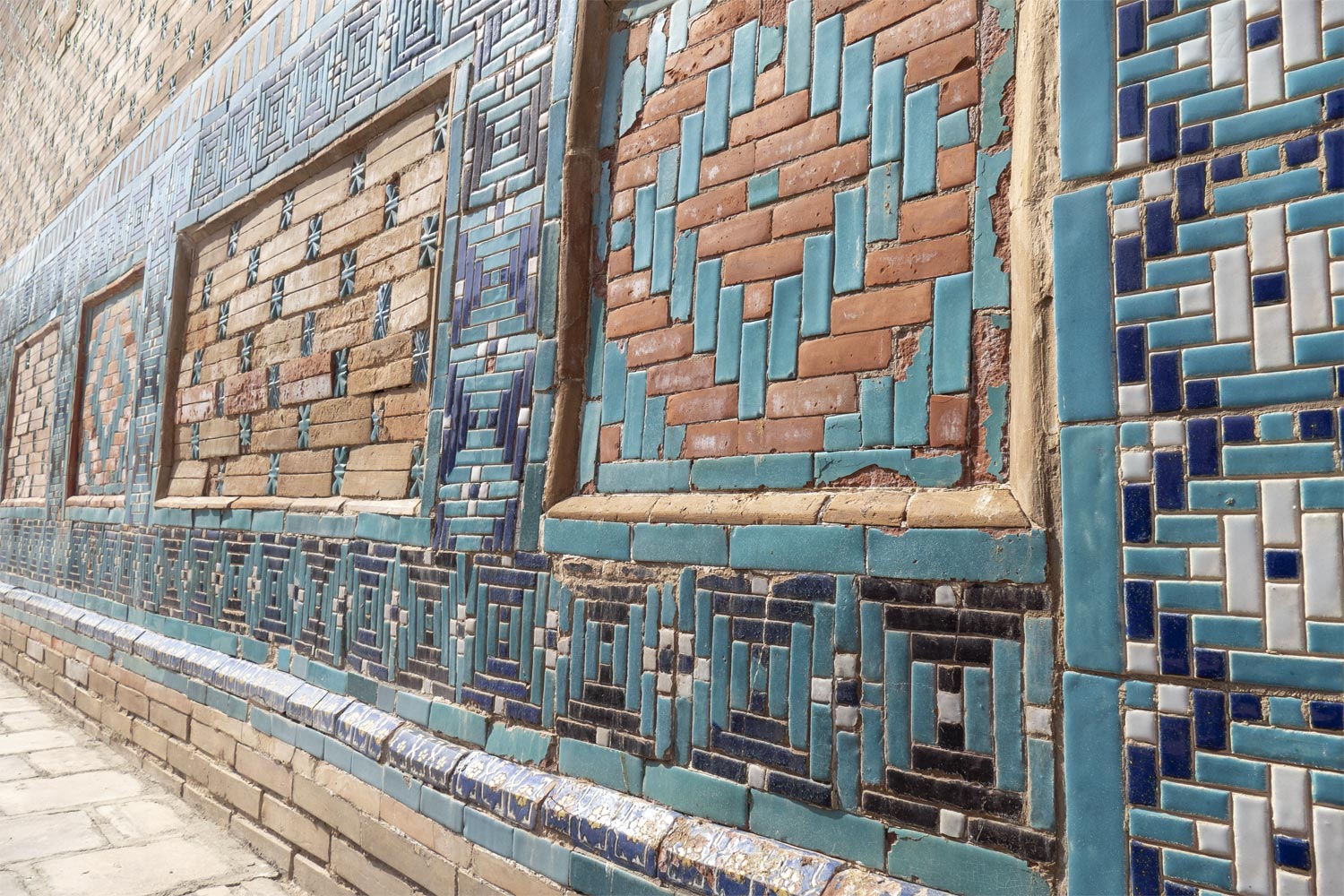
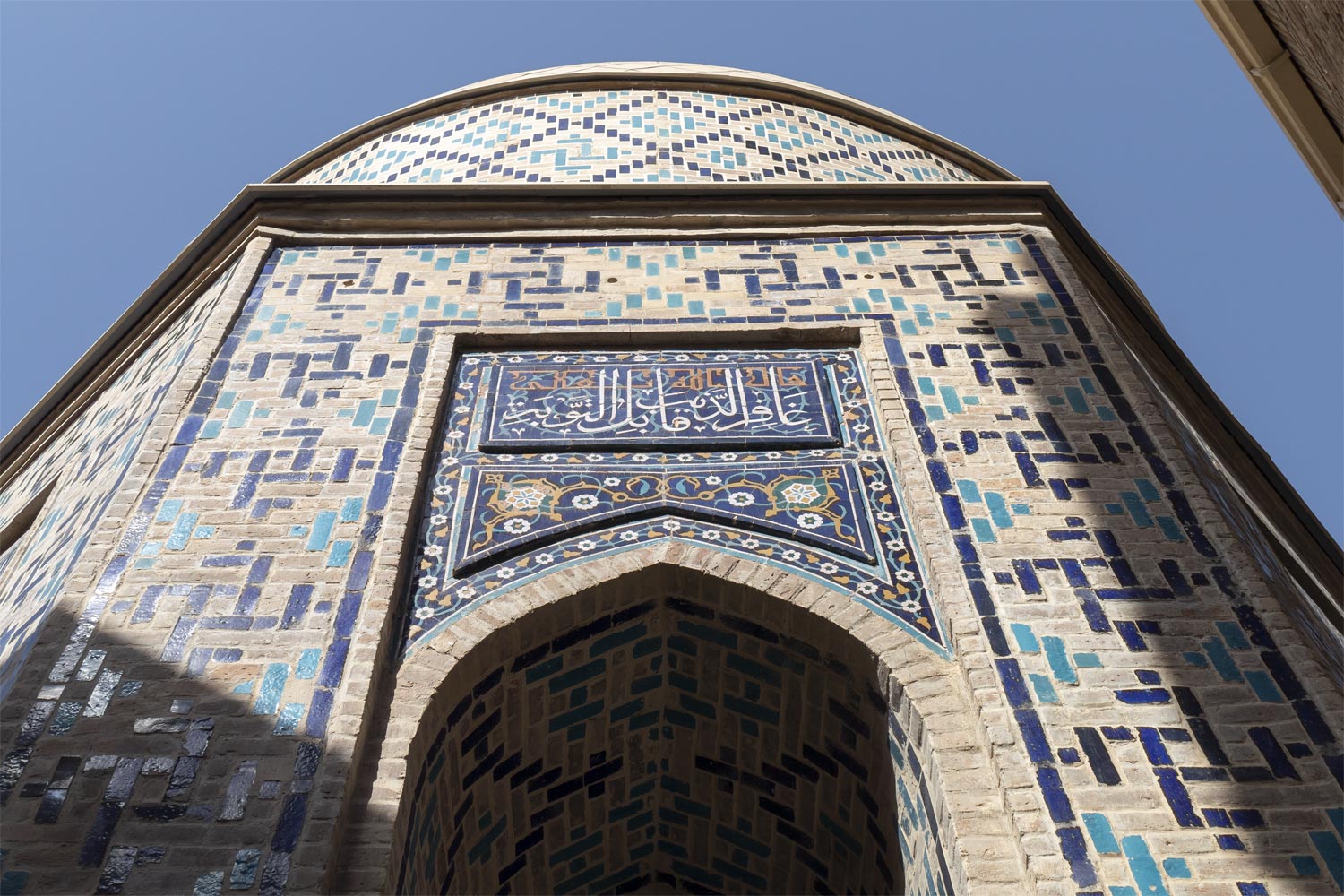
Mausoleum of President Karimov
It did not go without farce. The glory of the Timurid Empire haunts modern rulers of Uzbekistan.
So, the former president of Uzbekistan, Islam Karimov, decided to showcase his complex of inadequacy to the whole world. It turned out that it was of such enormous proportions that it would not fit inside Ulugh Beg Observatory.
In his attempts to make a mark in history, Islam Karimov came up with the idea of building a mausoleum for himself. Just like Tamerlane’s. And it was erected in Samarkand. Of course, not by himself. The mausoleum was built by the new president two years after his death, but we understand whose initiative it was.
This complex of buildings was originally a mosque, which was opened back in 1919.
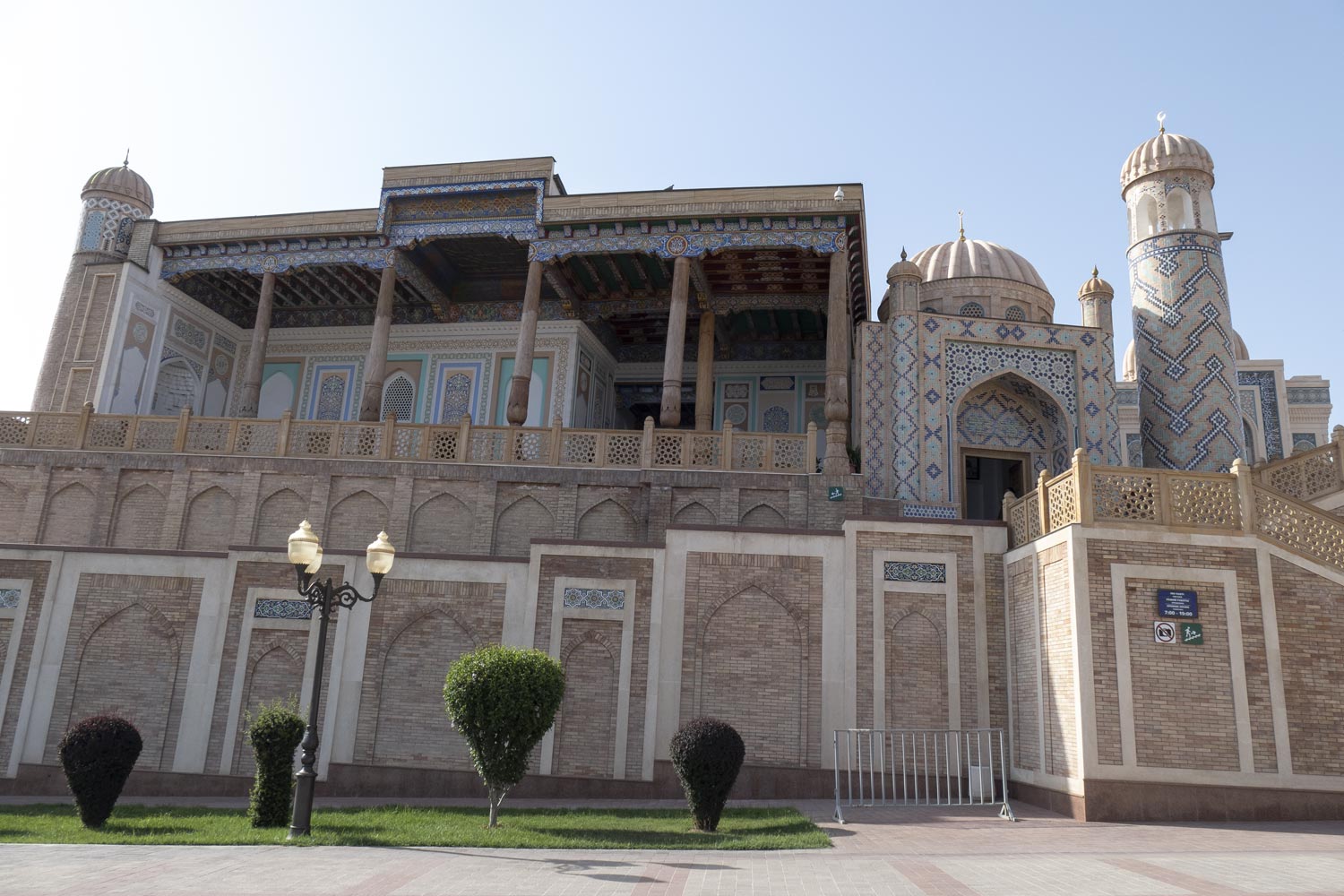
Immediately after Karimov’s death, his body was transferred to this mosque, and construction of the mausoleum around it began immediately. Two years later, the mausoleum was ready, and not even the UNESCO World Heritage status of the mosque hindered its construction.
The second greatest audacity was the ban on photographing this mausoleum. I mean, seriously, what’s the deal? First, you build it, and now you’re shy about it?
Of course, the ban didn’t stop me, and I captured the mausoleum by finding a blind spot in the security.
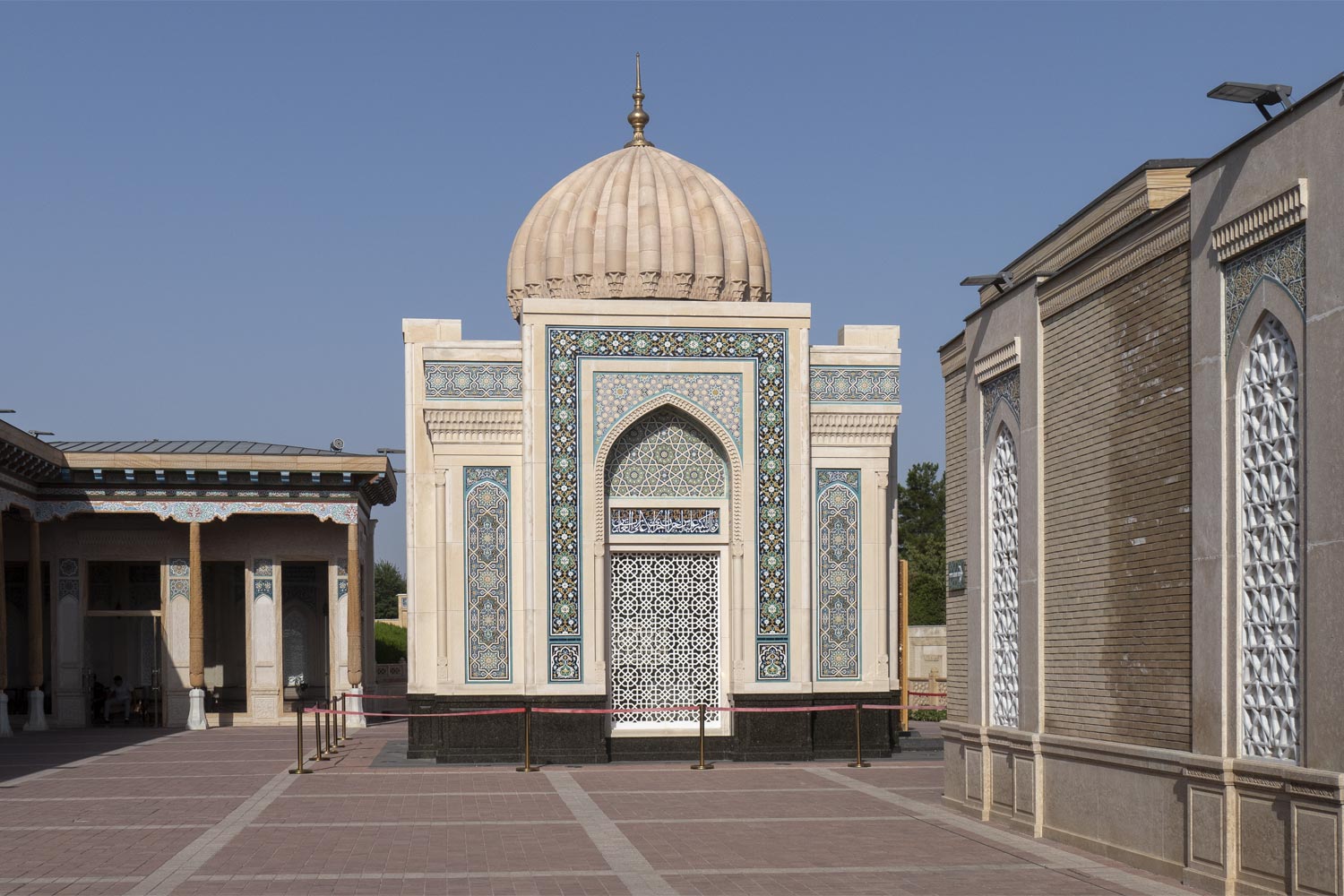
At the entrance to the mausoleum, there is a sign that reads: “This sacred place is the eternal resting place of the First President of the Republic of Uzbekistan, the great statesman and political figure, the dear and beloved son of the Uzbek people, Islam Karimov.”
And you say there’s a cult of personality in Russia.
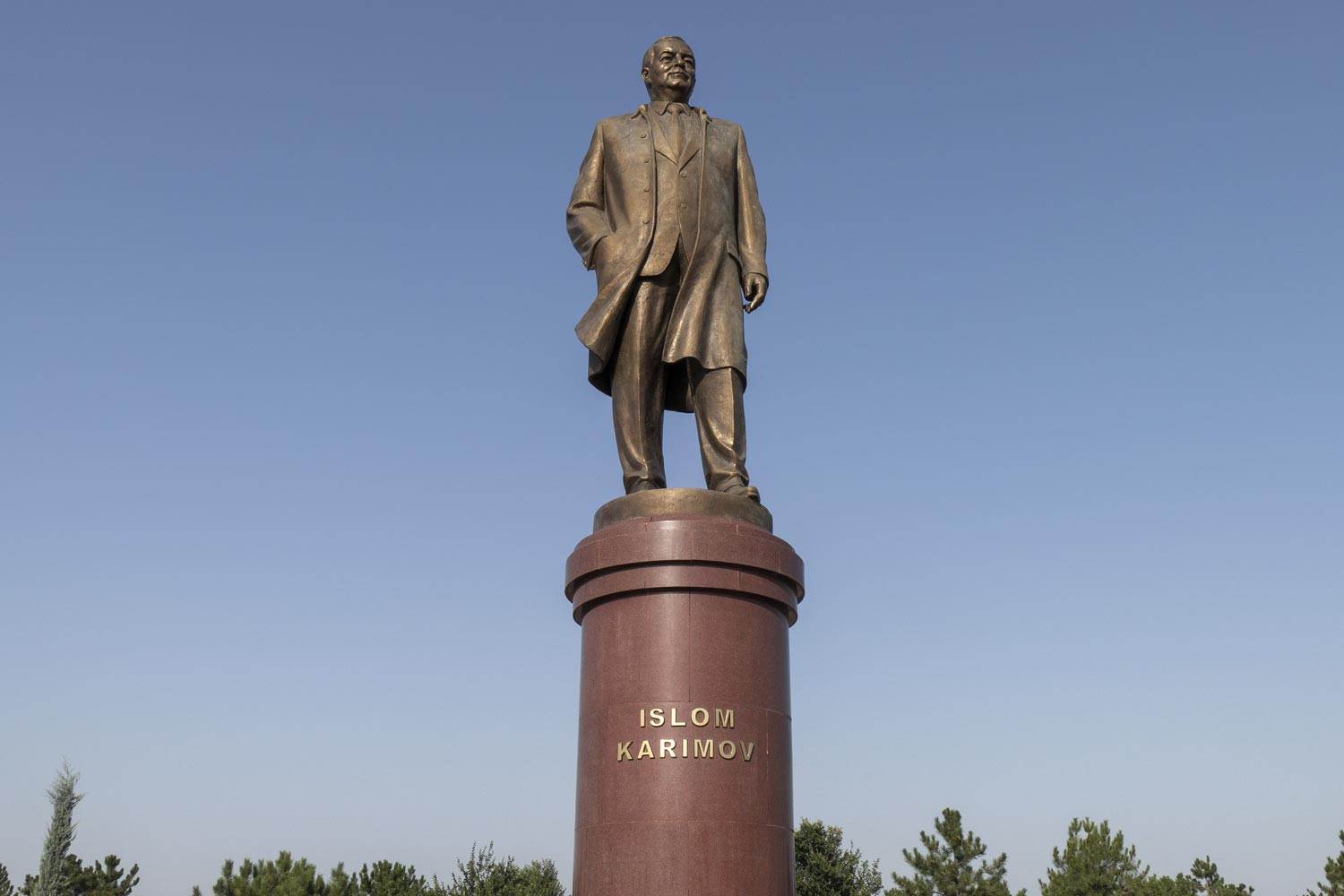
Non-touristic Samarkand
Certainly, all this Persian luxury is only a historical part of Samarkand. A city cannot consist solely of palaces and mausoleums; people also need a place to live.
Residential Samarkand is the dreary dilapidated buildings, broken sidewalks, makeshift parking on the grass, and rusty playgrounds.
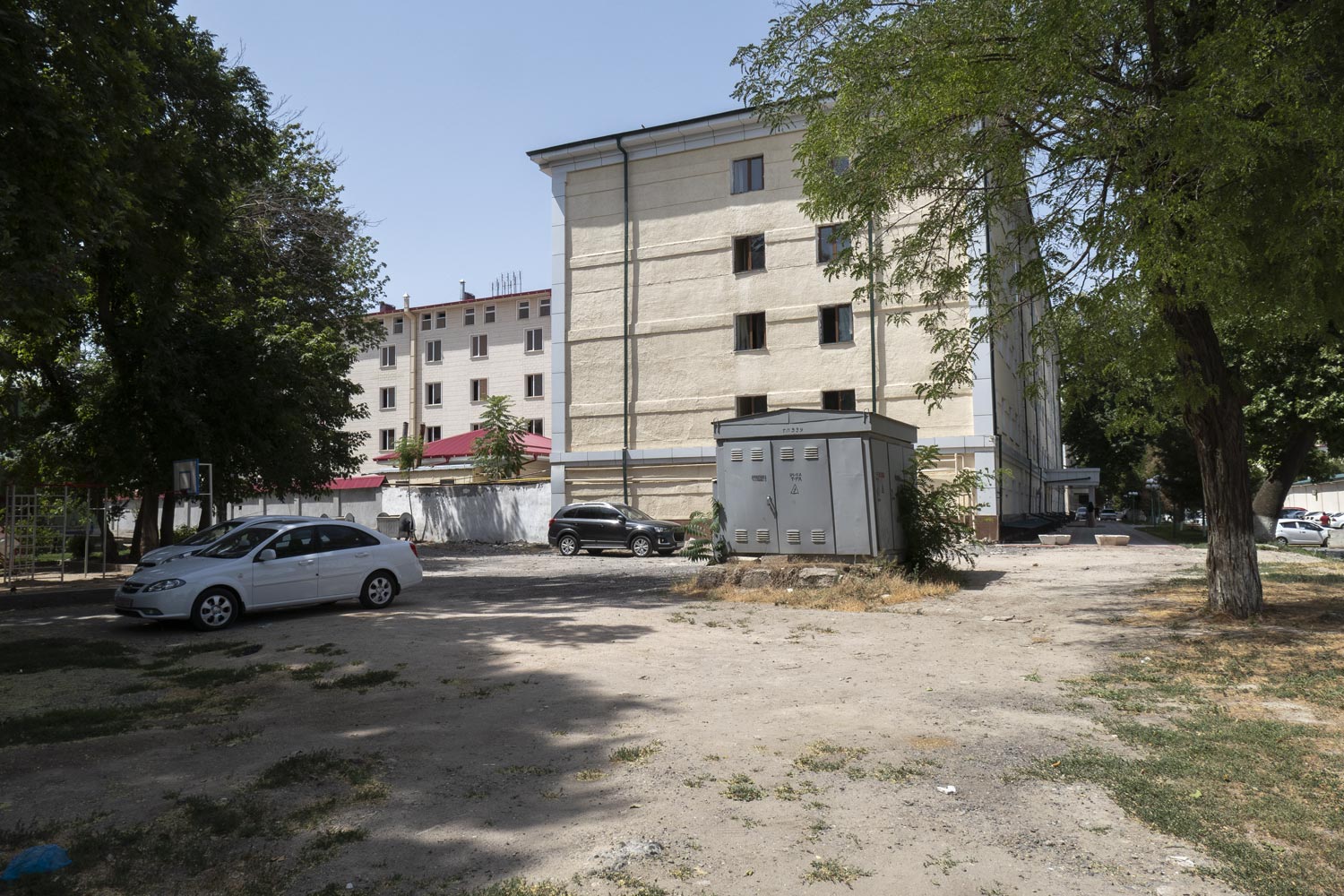
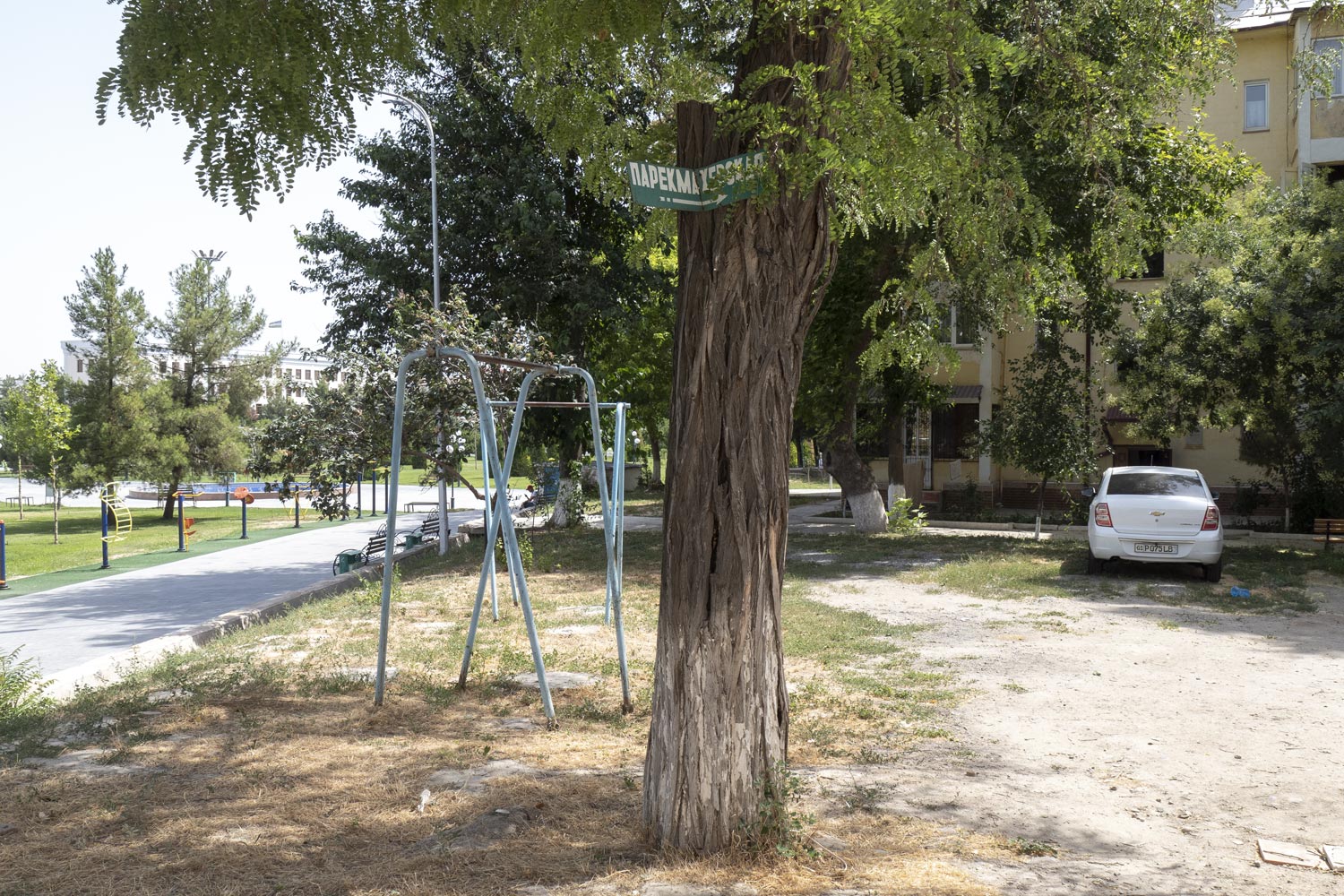
Along the best streets stand fairly acceptable houses from the time of Stalin.
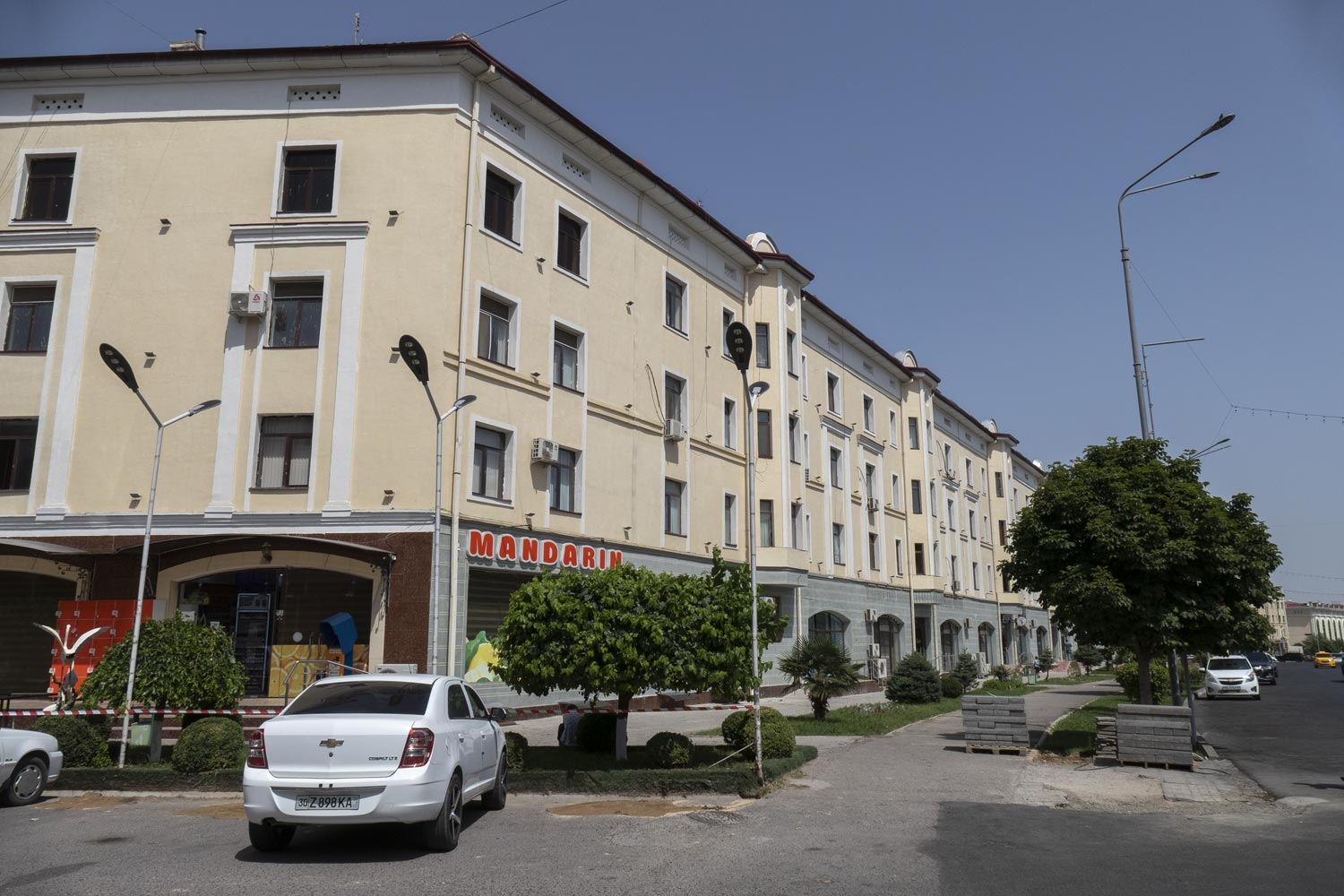
There is no design code in Samarkand, so the city is cluttered with terrible advertisements.
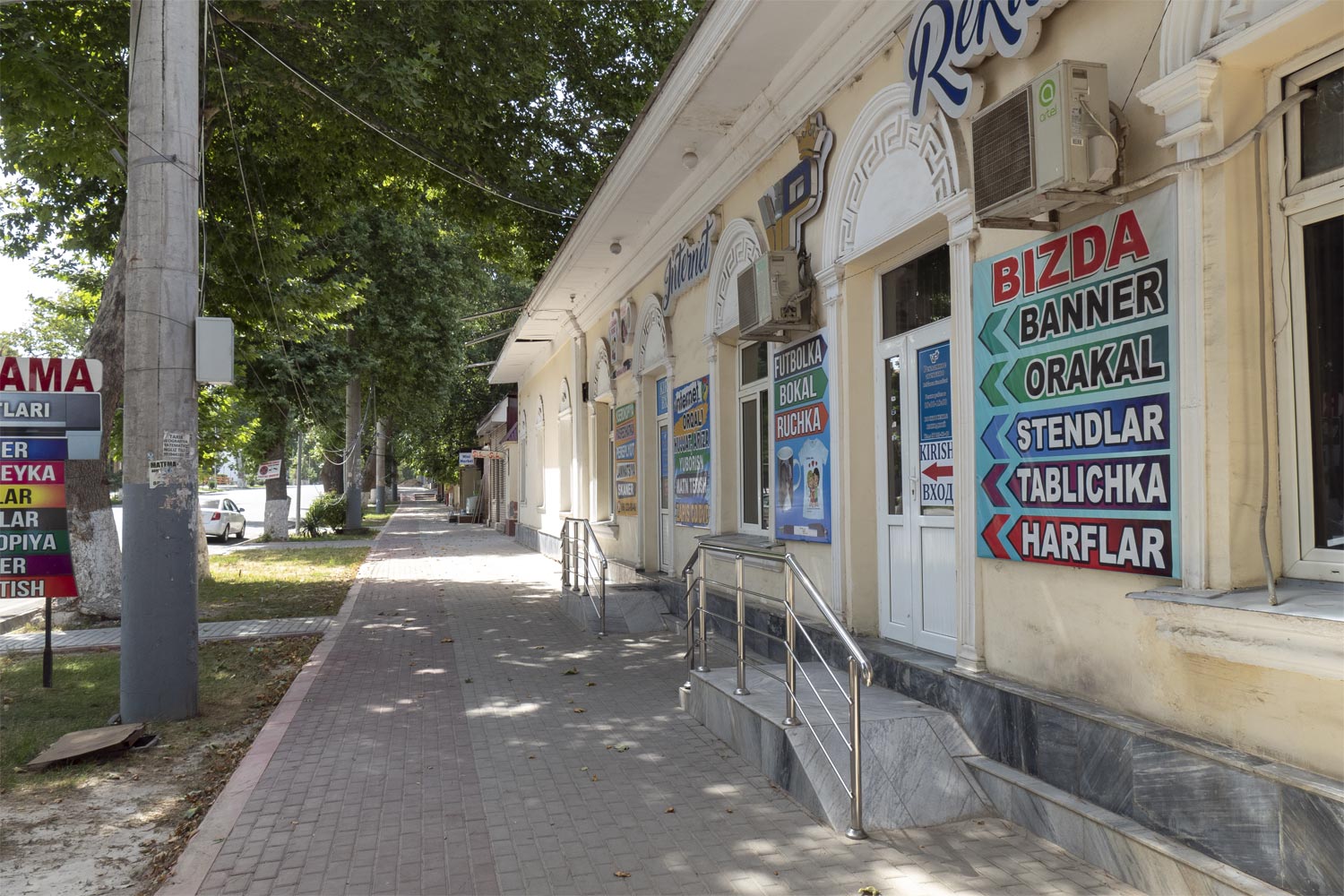
For tourists, they are building hotels here in the style of palaces.
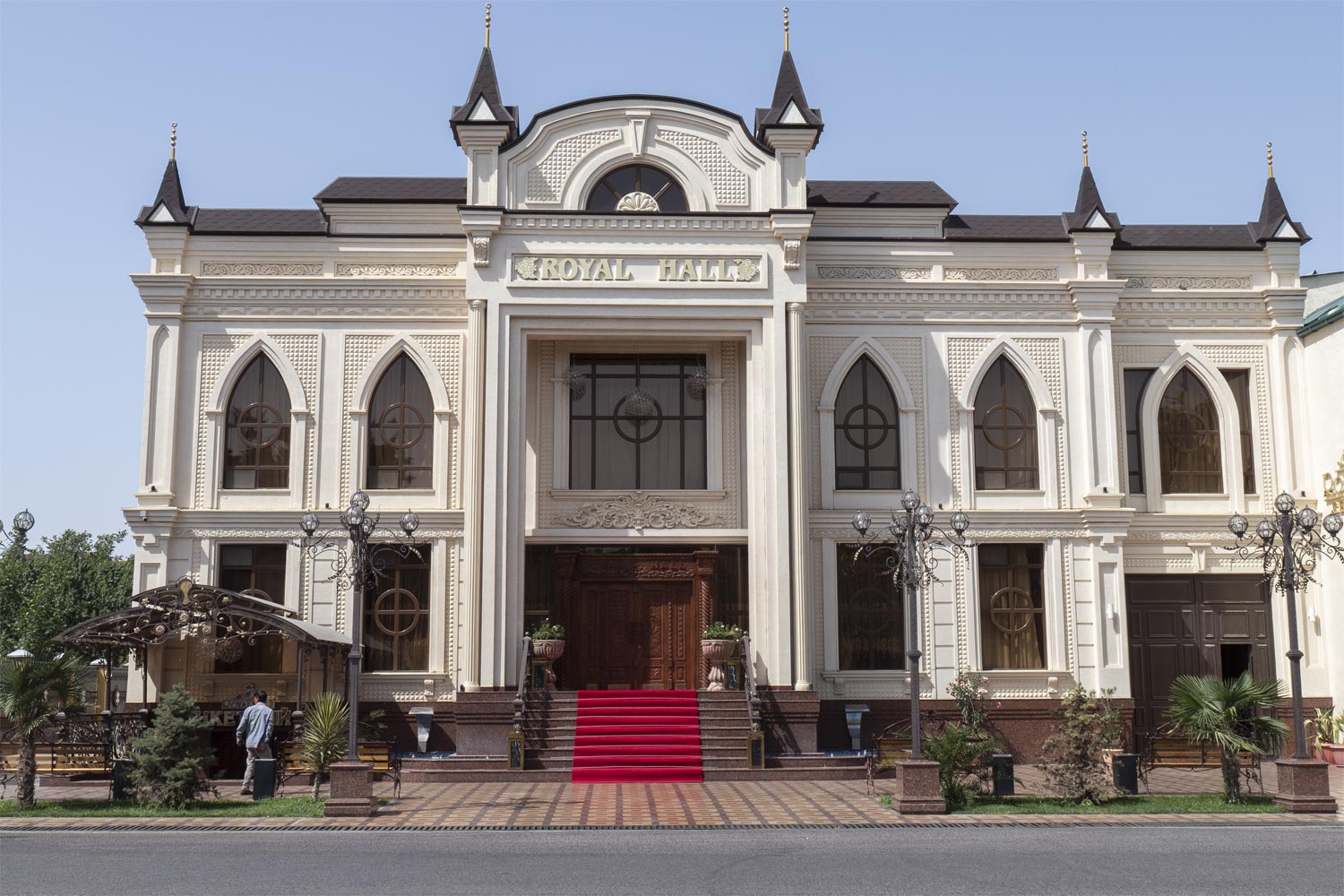
And they themselves live in an uncomfortable private sector.
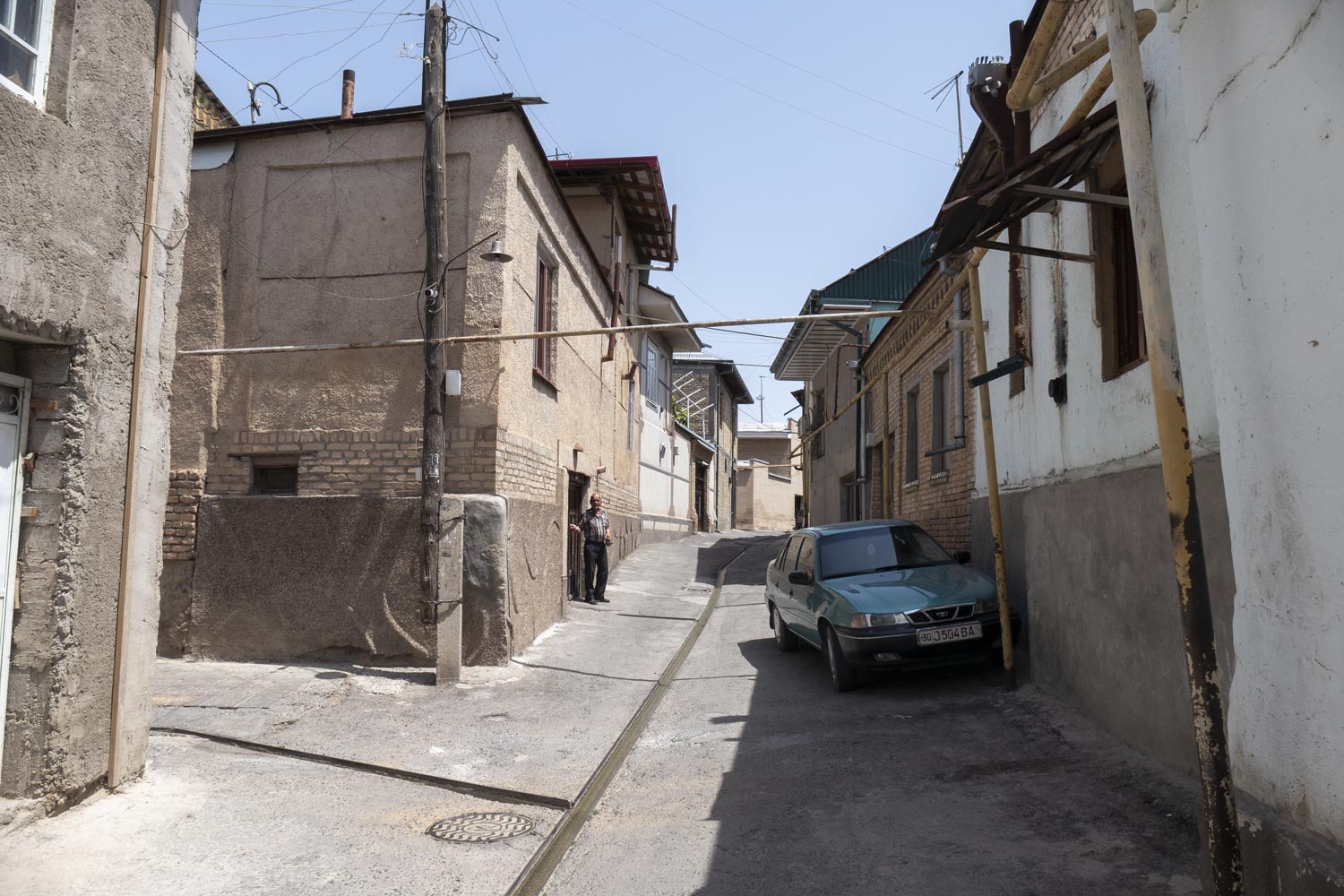
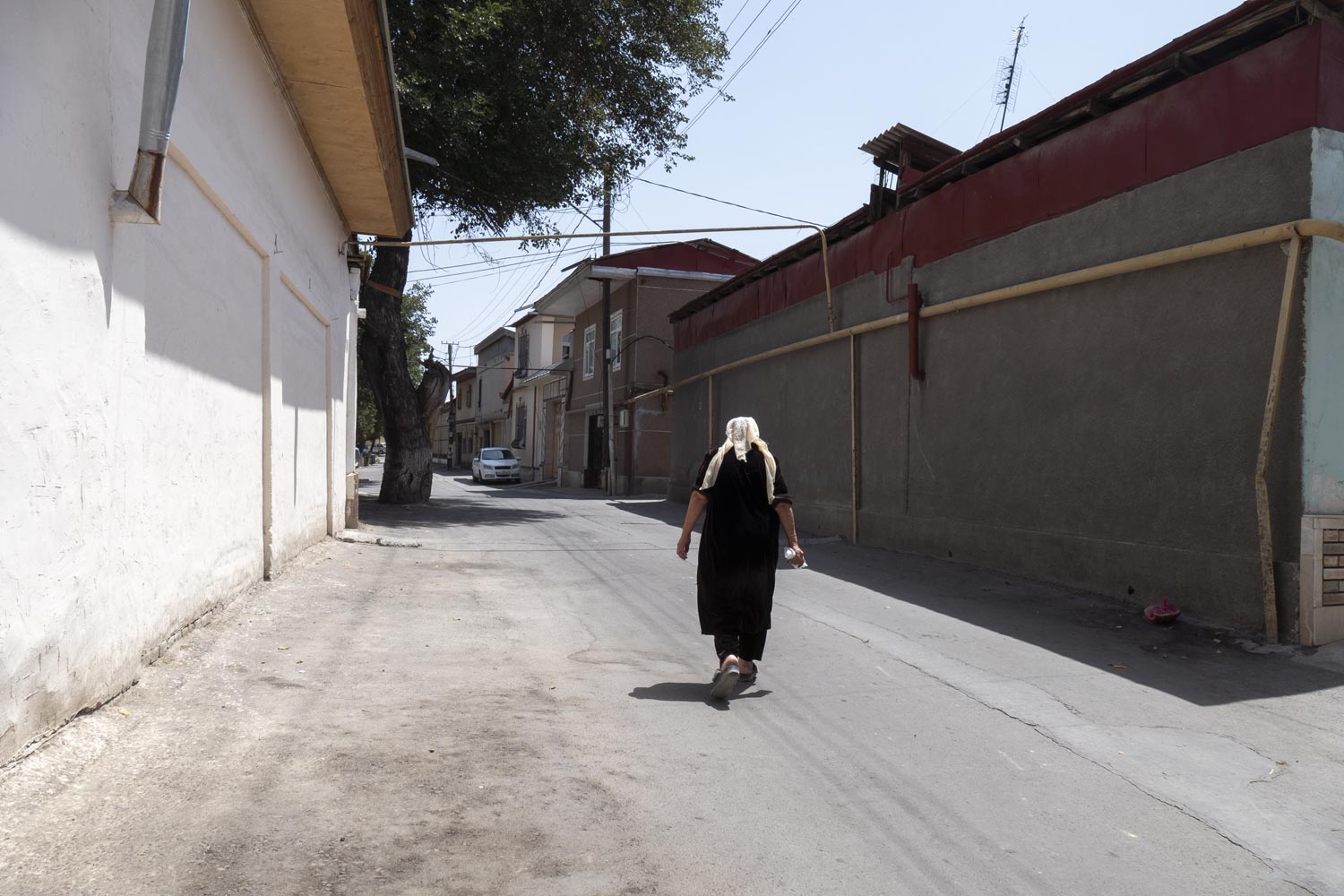
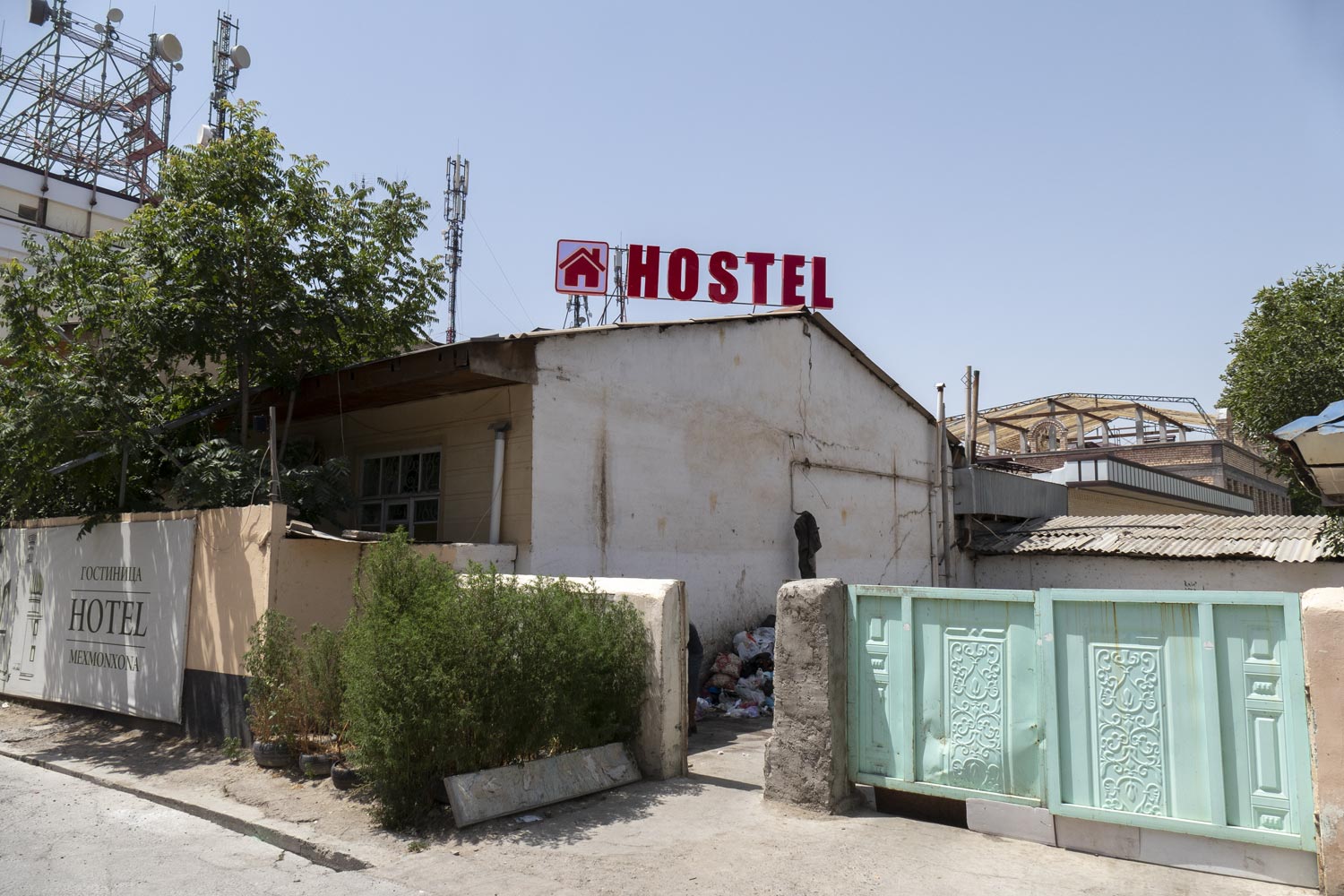
The pattern is peeling off the freshly planted arches.
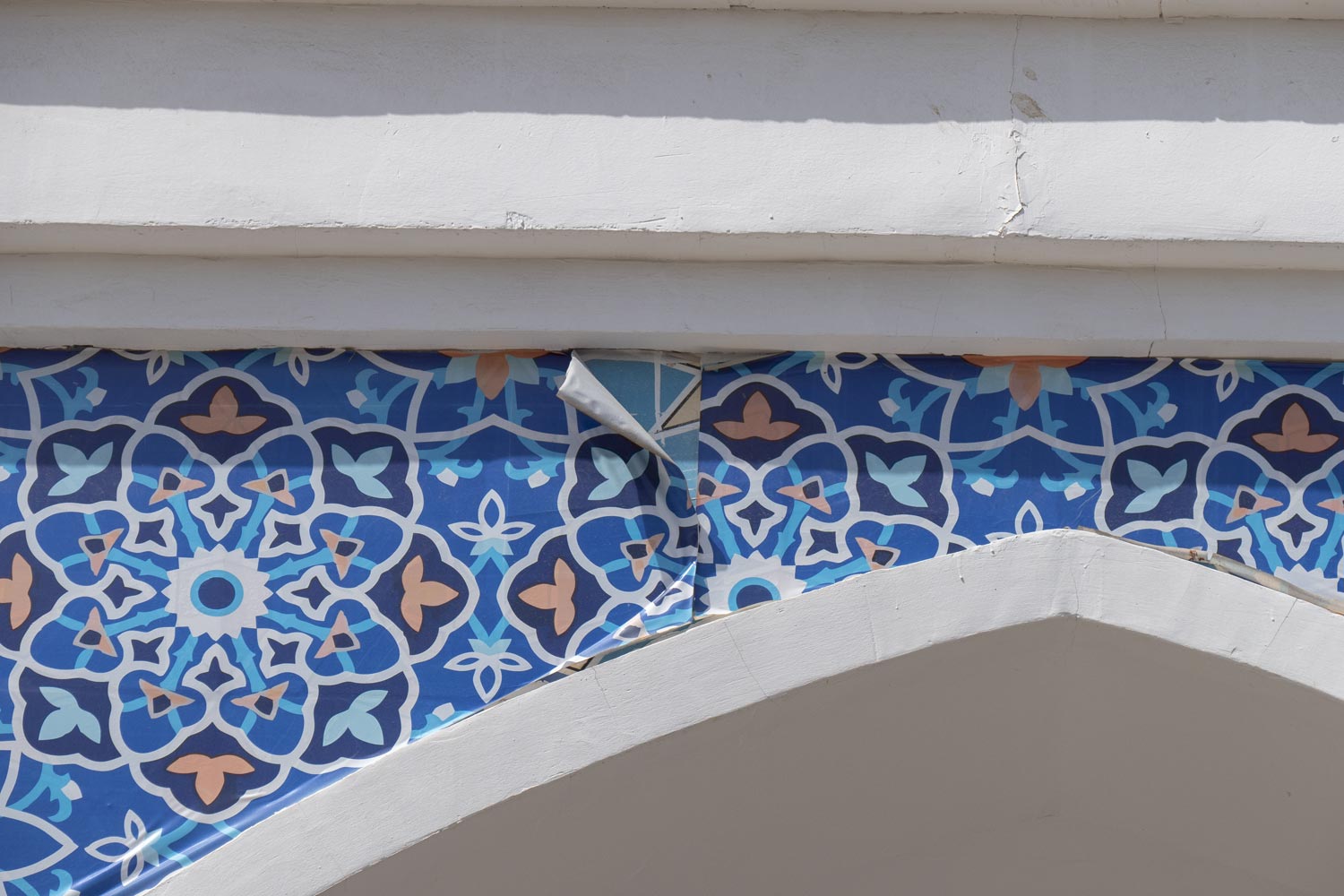
There are no pedestrian crossings on the freshly laid roads.
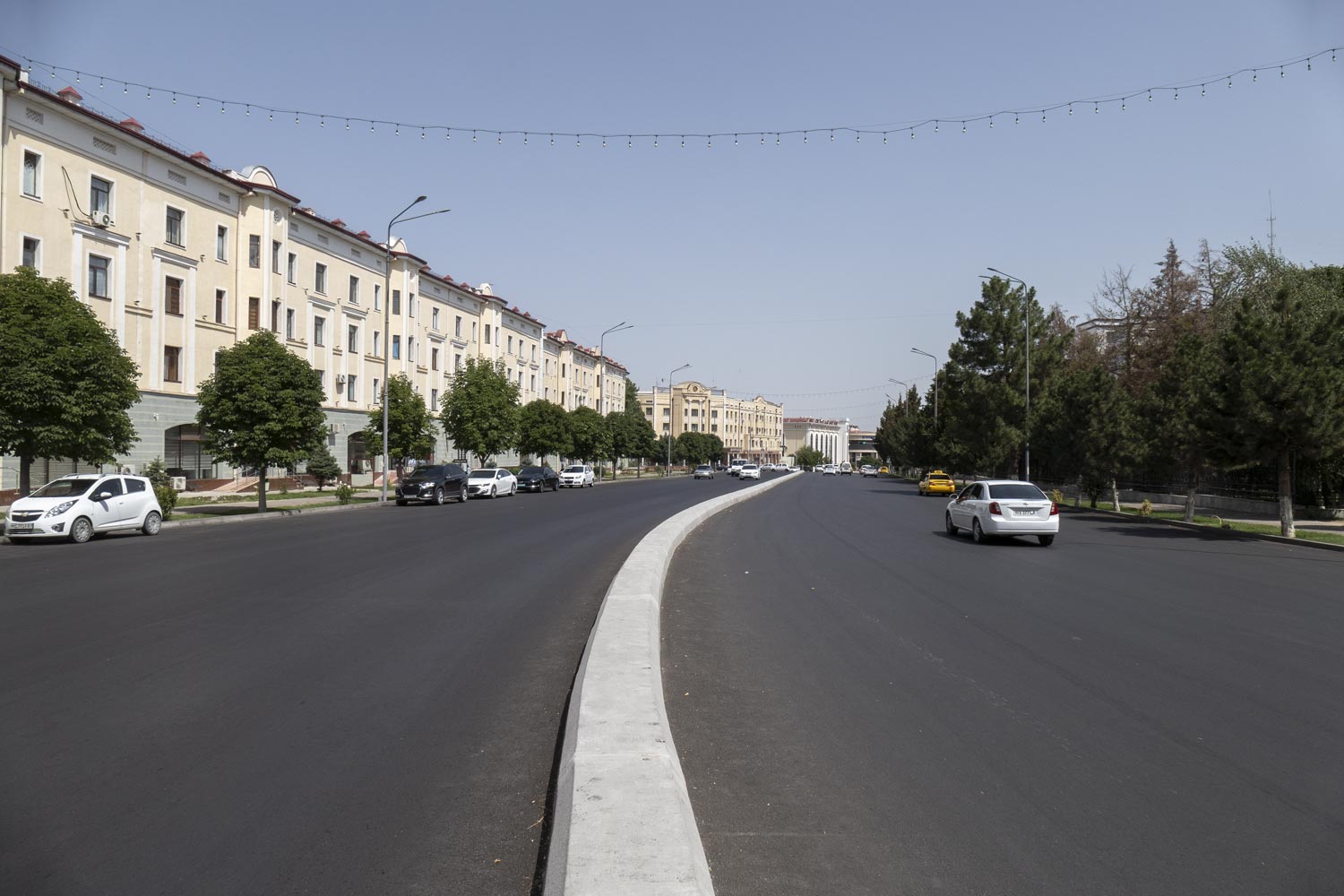
However, I can’t say anything bad about Samarkand. I have not received such a warm welcome anywhere else. Starting from free ice cream in cafes to a shot of moonshine at a cow pasture.
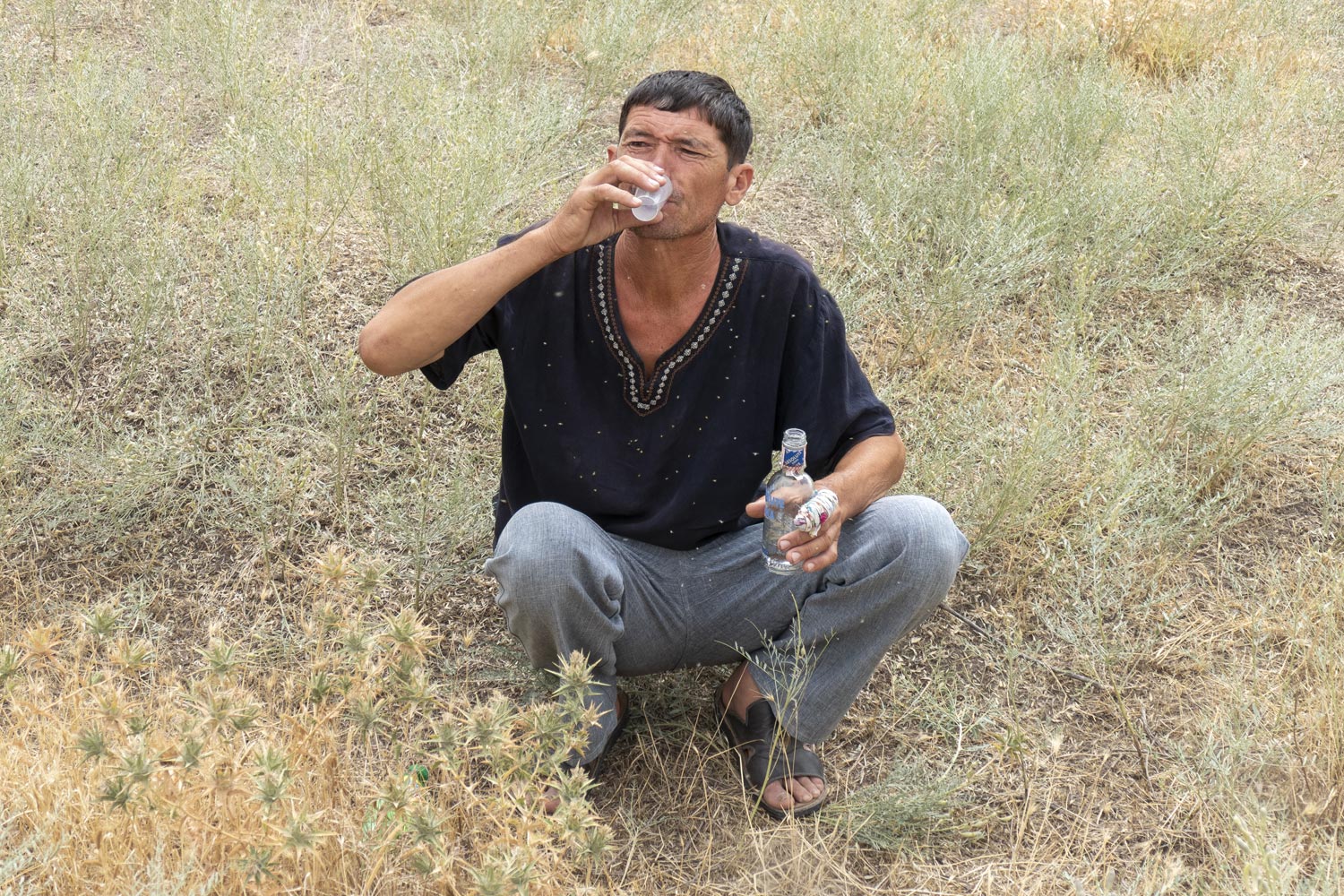
Thank you, Uzbekistan.


